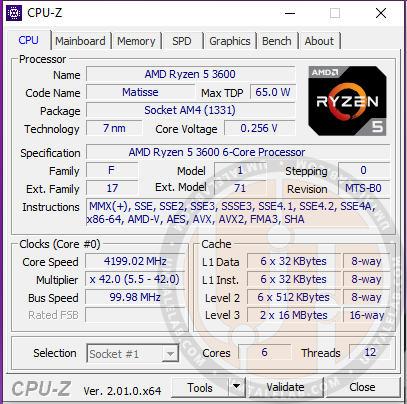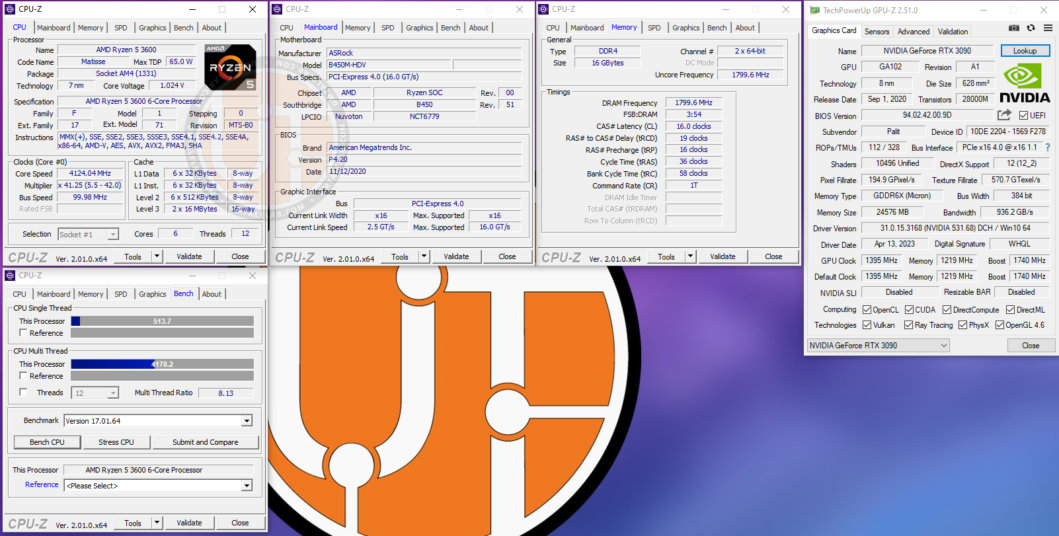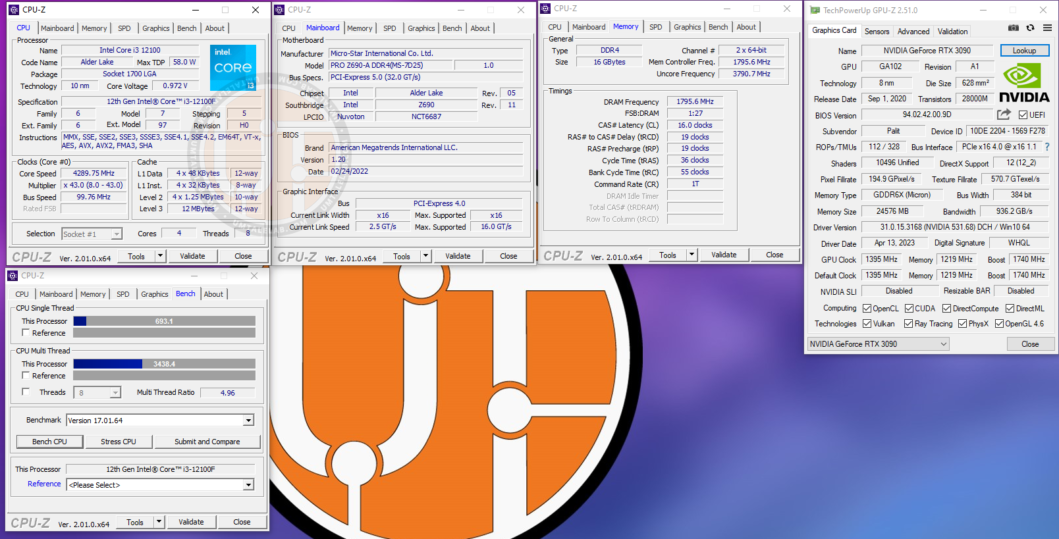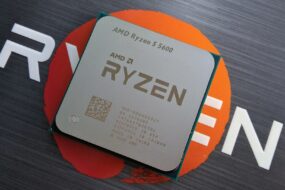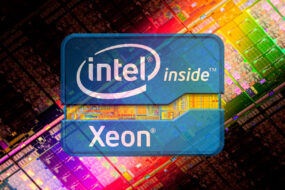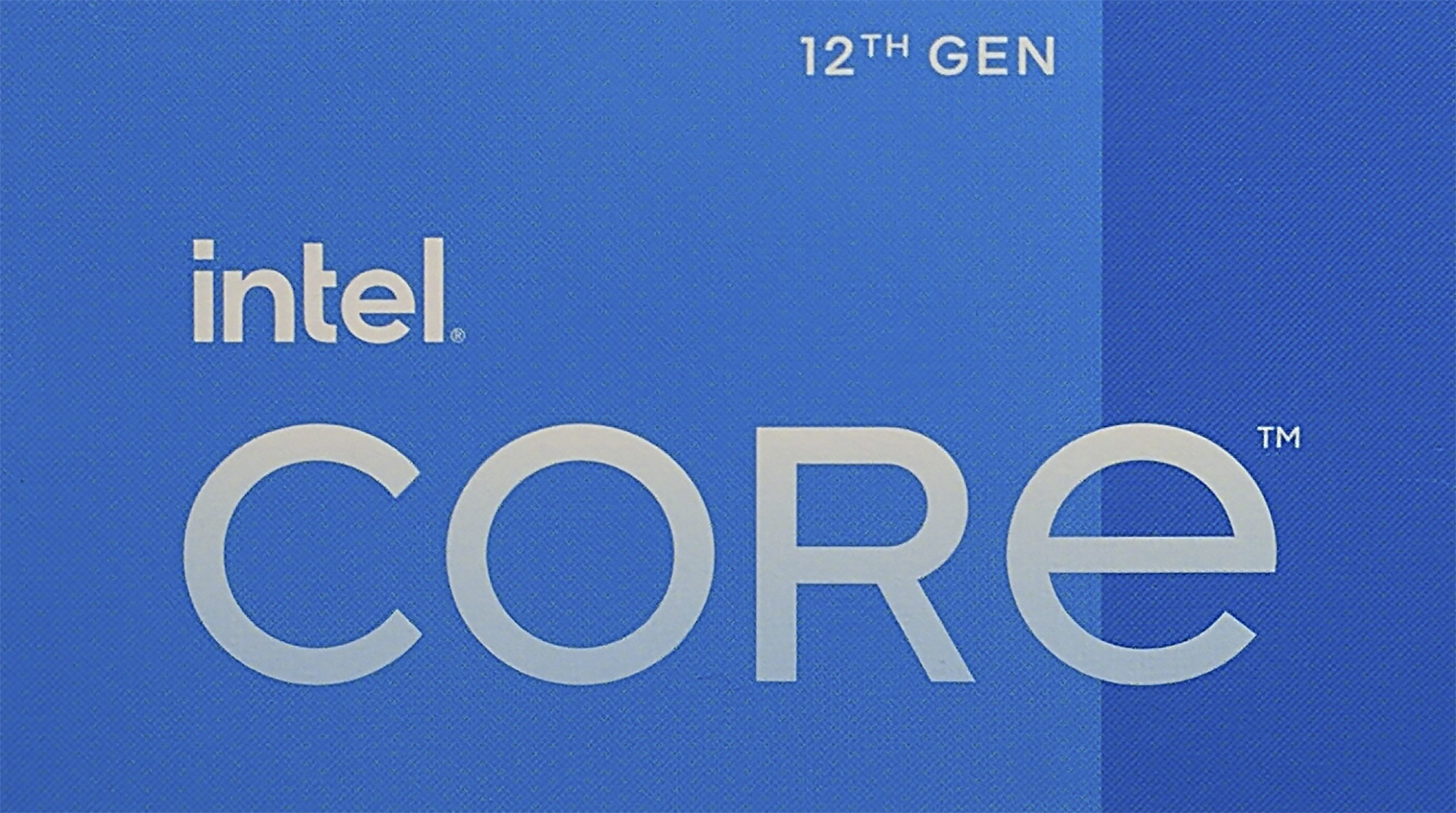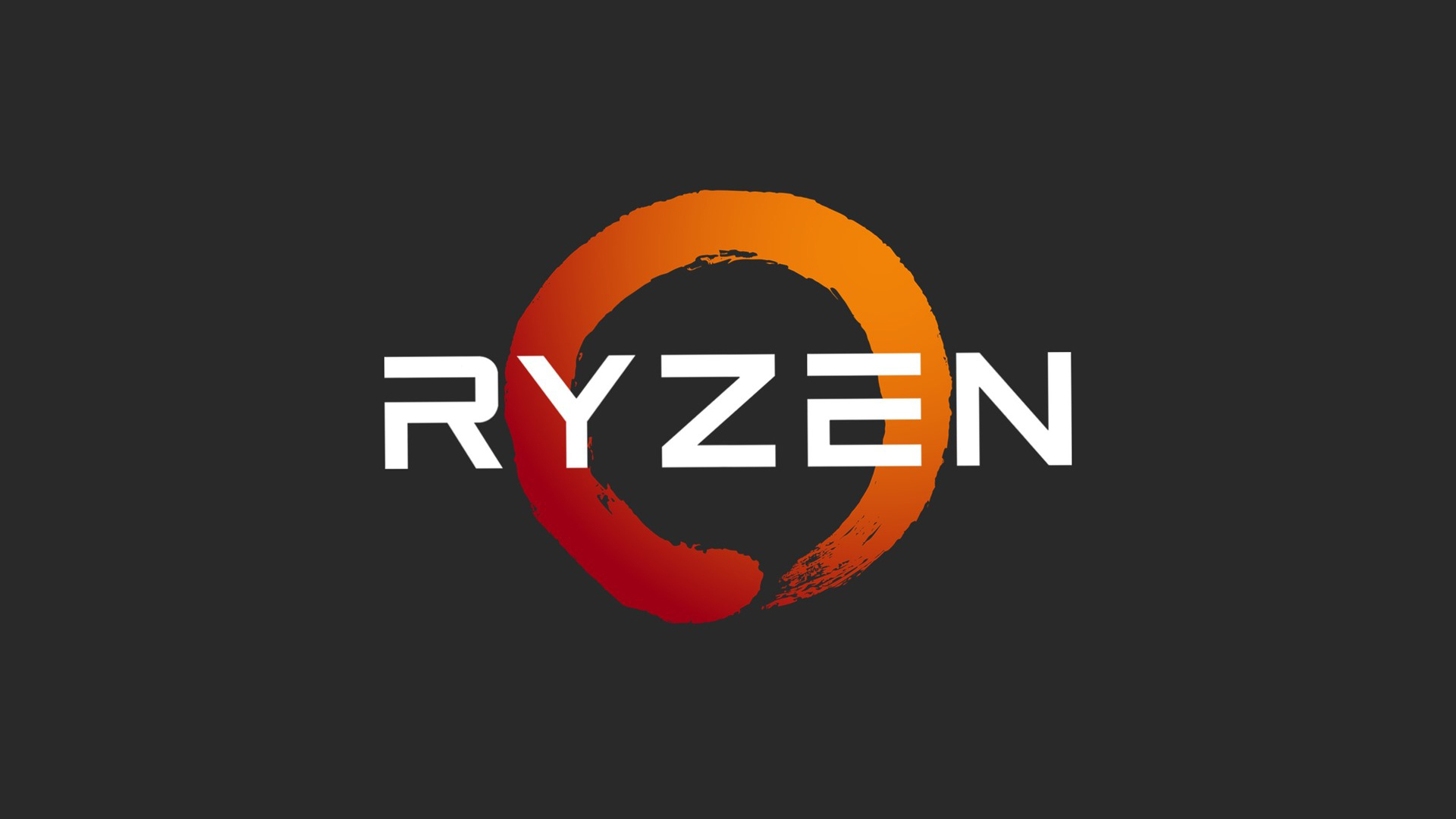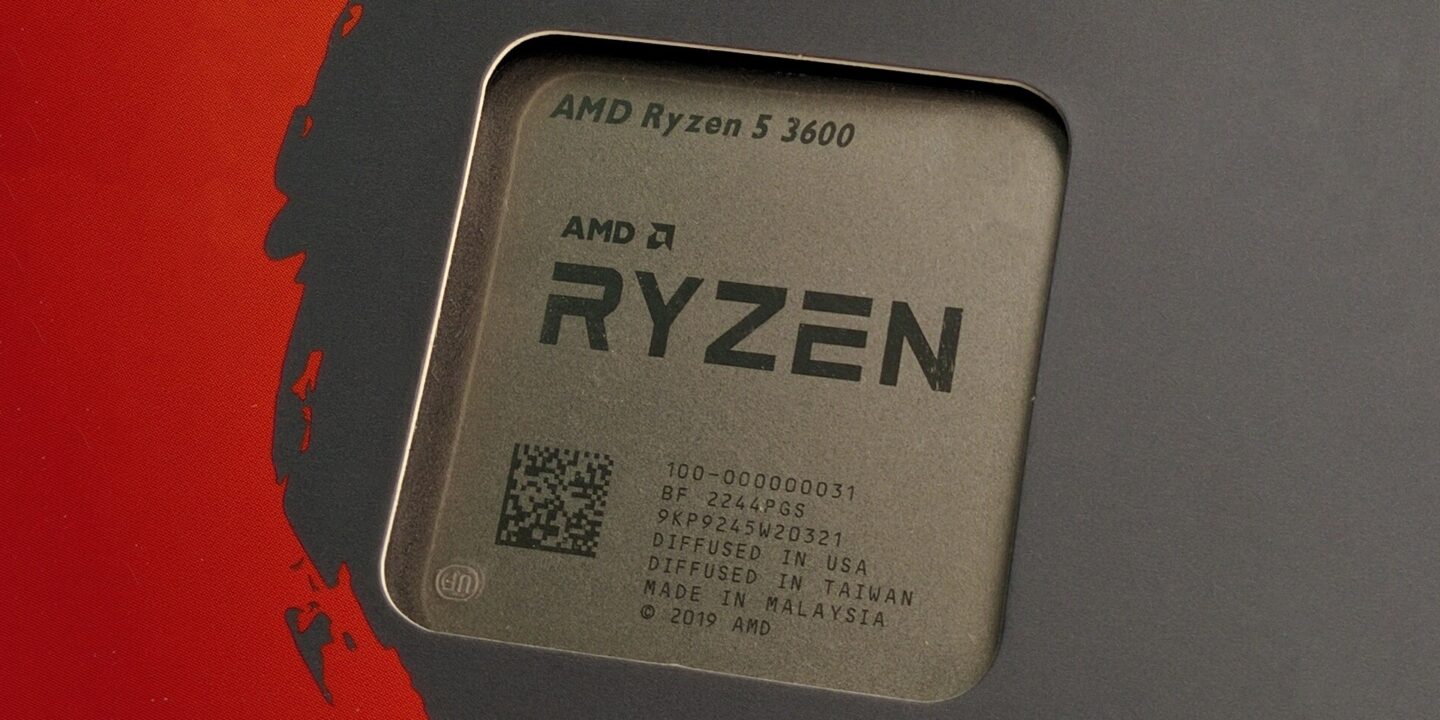
The only processor based on AMD Zen 2 architecture that can still be found on store shelves is Ryzen 5 3600. Moreover, it is still sold in rather large quantities. And it’s not surprising at all. AMD never decided to release “really” low-cost Zen 3 CPUs with less than six cores, which is somewhat strange, because the competitor offers very successful Core i3 chips of the 12th and 13th generation.
Nevertheless, the red chipmaker needed something to occupy the budget segment. And here, AMD came to the rescue with its relatively easy to produce 6-core Ryzen 5 3600 processor, polished to a shine by Zen 2 architecture.
This CPU is one of the most affordable solutions for economical gamers and content creators, however, as we have already written above, in the realities of 2023 Ryzen 5 3600 has some very serious competitors. But first things first.
Processor
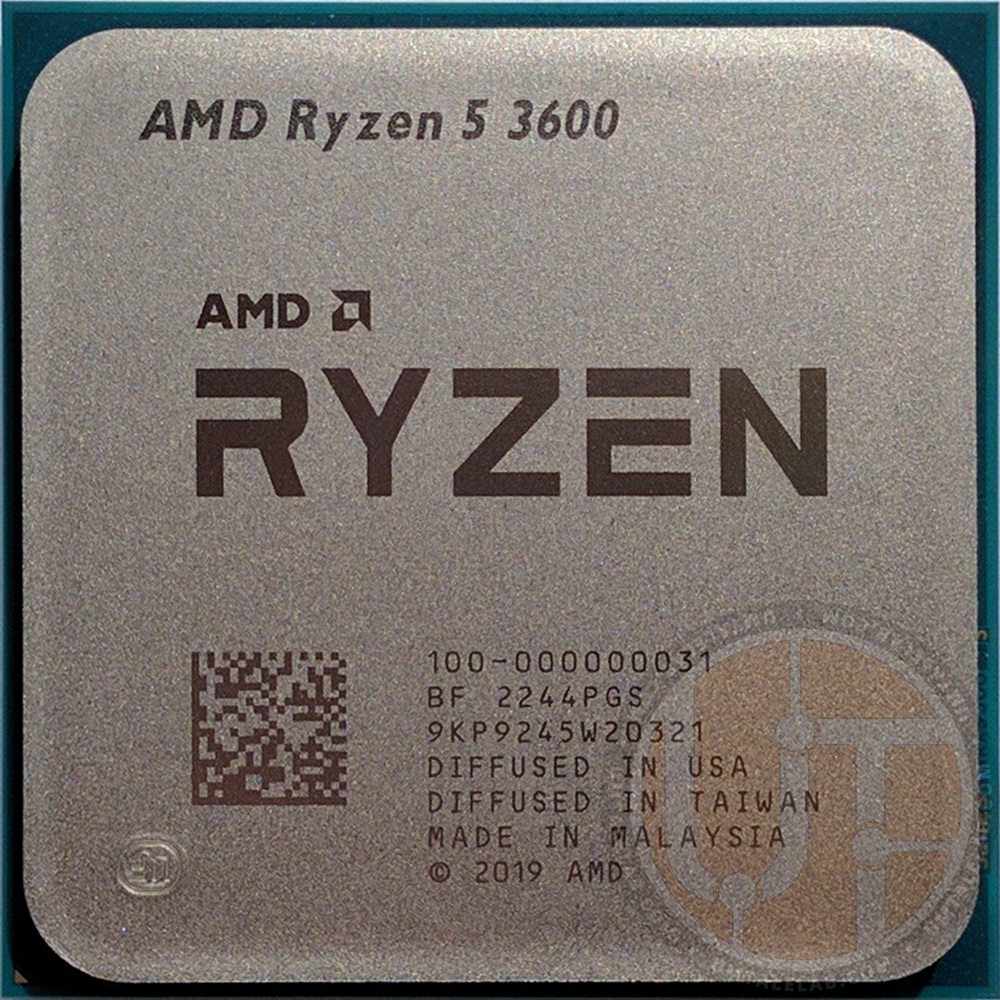
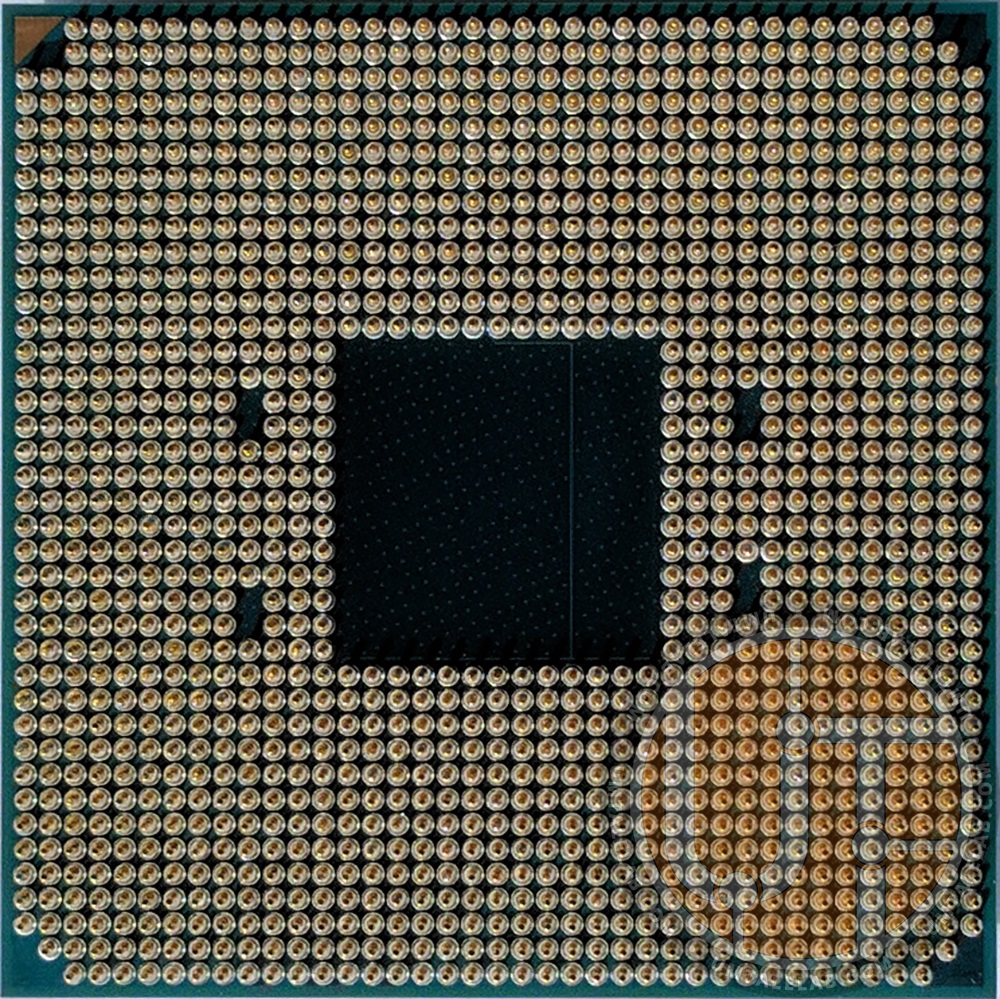
The base frequency of the Ryzen 5 3600 chip is 3600MHz, and its TDP is set at 65 watts. As we have already written in the article about Ryzen 5 5600, at first look this is a very small figure, but we should take into consideration something: CPU’s 7nm crystal has an extremely small heat dissipation area, so coolers designed to remove 65 watts can’t handle the hot temper of this CPU. Moreover, it is much worse than the same Ryzen 5 5600. However, in order to make the 6-core Zen 2 feel relatively “comfortable”, a cooling system with the possibility of allocating 95-125 watts will be enough.
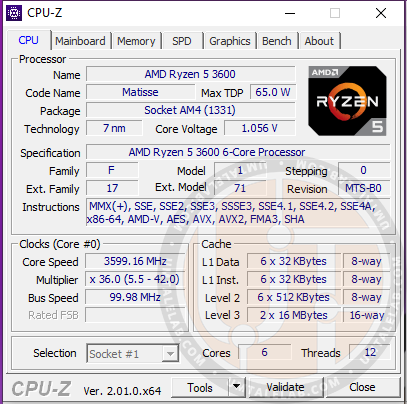
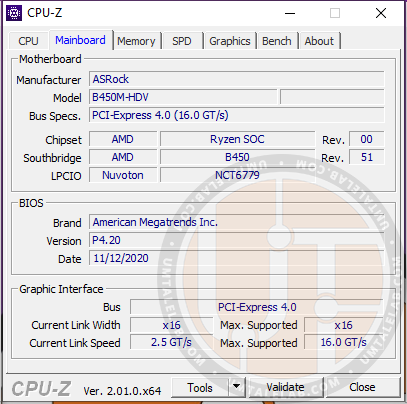
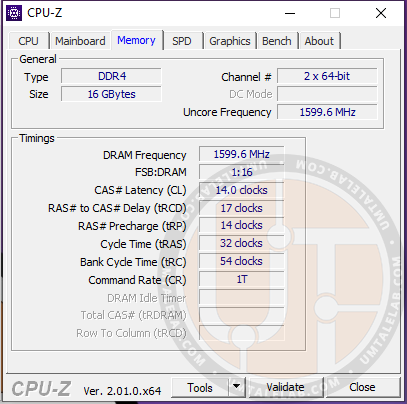

At the heart of the Ryzen 5 3600 processor is a 6-core, 7nm MTS-B0 revision crystal based on AMD Zen 2 architecture. This chip has 512KB of 2nd level cache per core and a total, high-capacity 3rd level cache of 32MB (16MB in each CCX block). This CPU is designed for installation in motherboards with AM4 socket, its nominal frequency is equal to 3600MHz, but with the Precision Boost 2 technology it can be increased up to 4200MHz.
On the bench motherboard ASRock B450M-HDV our processor sample functioned steadily at the 4,100-4,200MHz almost in all types of load. The only exception was stress tests like LinX and Prime95, where the chip’s frequency occasionally dropped to 3900-4000MHz due to TDP limitations. But this is quite a normal phenomenon.
The 3600’s integrated memory controller speed is not linked to the RAM frequency and depends entirely on the Infinity Fabric bus dividers. Nevertheless, the maximum efficiency of the controller is achieved at a DDR4/IF frequency ratio of 1 to 1.
Officially, the Ryzen 5 3600 processor’s maximum RAM speed is limited to dual-channel DDR4-3200MHz. And unfortunately, without overclocking, this is the limit. We failed to run the Corsair Vengeance RGB PRO test sticks at the effective frequency of DDR4-3600 (1800MHz) at 1800MHz Infinity Fabric mode, and after all, this is their XMP profile, with which the Ryzen 5 5600 functioned without any interference in supply voltages.
Well, there is nothing to worry about, because it is solved by fine-tuning the motherboard BIOS, which we will tell you about a little bit below.
In addition to all of the above features, it should be noted that the 6-core Zen 2 has SSE4.2, FMA3, AVX and AVX2 instructions, which are so necessary in the realities of 2023. This feature will help avid gamers to run any new product of this year without any problems, and, as practice shows, even with activated ray tracing.
Overclocking and optimizing RAM
As we mentioned above, the Ryzen 5 3600 failed to function adequately with DDR4@3600MHz RAM at base voltages. Overall, this is a relatively easy fix. Nevertheless, this is already considered overclocking.
It should be noted that the maximum performance of the RAM subsystem can be achieved only with Infinity Fabric-DDR4 1 to 1 divide. This means that the IF frequency must be at the same level as the real (not effective) RAM frequency.
With this parameters the system was not stable at all and we had to search for optimal voltages of individual CPU blocks.
The outcome of our research was the following values:
- DDR4@3600MHz with timings 16-19-16-36;
- DDR4 voltage — 1.360v;
- Infinity Fabric@ 1800MHz (1:1);
- SOC voltage — 1.050v;
- cLDO VDDP voltage – 0.950v;
- VDDG CCD voltage – 1.000v;
- VDDG IOD voltage – 1.000v.
After overclocking and optimizing the RAM, we decided to overclock the Ryzen 5 3600 cores, but, as you might expect, it was a rather pointless endeavor. Starting from the 4300MHz mark, the CPU cores temperatures went over 90 degrees, and attempts to reduce the cores’ supply voltage below 1.3 volts left no chance to complete the Prime95 or LinX stress test.
After such a failure it was decided to turn to the Clock Tuner for Ryzen utility, but even it reported extremely poor overclocking potential of our CPU.
Here we have to make a very important remark: it is far from a fact that we got a successful sample of the processor, and it is quite possible that your copy will be much more malleable.
In the performance graphs, the processor with overclocked memory will appear as Ryzen 5 3600 3.6-4.2GHz OC.
Test bench, software and CPU settings
A similarly priced Intel Core i3-12100F processor has been chosen as the main competitor to the Ryzen 5 3600:
Test bench
- Intel CPUs — Core i3-12100F, Core i5-12400F, Xeon X5660, Xeon E5-2667, Xeon E5-2620 v3, Xeon E5-2670 v3;
- AMD CPUs — Ryzen 5 1600X, Ryzen 5 3600, Ryzen 5 5600, FX-8350;
- CPU cooling — Cooler Master Hyper 212 Black Edition (RR-212S-20PK-R1);
- RAM for LGA 1700 – 2 x 8GB Corsair Vengeance RGB PRO (CMW16GX4M2C3600C18) with a total of 16GB;
- RAM for LGA 1700 – 2 x 8GB Corsair Vengeance RGB PRO (CMW16GX4M2C3600C18) with a total of 16GB;
- RAM for LGA 2011 – 4 x 8GB Micron MT36JSF1G72PZ-1G4M1HF with a total of 32GB;
- RAM for LGA 2011 v3 – 4 x 4GB G.SKILL DDR4 F4-2400C15S-4GNT with a total of 16GB;
- RAM for AM3+ – 2 x 8GB HyperX Genesis Na’Vi Edition (KHX16C9C2K2/8) with a total of 16GB;
- RAM for AM4 – 2 x 8GB Corsair Vengeance RGB PRO (CMW16GX4M2C3600C18) with a total of 16GB;
- LGA 1366 motherboard – DELL T3500 (09KPNV);
- LGA 1700 motherboard – MSI PRO Z690-A DDR4 (MS-7D25);
- LGA 2011 motherboard – DELL T3610 (09M8Y8);
- LGA 2011 v3 motherboard – Qiyida X99-H9 with a modified BIOS from Huananzhi x99-8m-f (Unlock Turbo Boost, Undervolt, and unlocked timing control);
- AM3+ motherboard – ASUS M5A97 LE R2.0;
- AM4 motherboard – ASRock B450M-HDV;
- Videocard — PALIT GAMEROCK GeForce RTX 3090 24GB (~1850/19000МГц, Power Limit 113%);
- SSD – KINGSTON SUV400S37120G 120.0 GB (Windows 10), KINGSTON SUV400S37240G 240.0 GB + KINGSTON SUV400S37400G 400.0 GB (Games);
- Power supply — Chieftec GPS-1250C.
Software.
- Operating system: Windows 10 x64 with the latest updates as of April 2023;
- Videocard drivers: NVIDIA GeForce 531.68 WHQL;
- Additional software for FPS measurement: MSI Afterburner 4.6.4;
- Games: testing was conducted on current versions of games as of April 2023;
- Game settings: testing was performed at the highest possible graphics settings in 1080p resolution.
Processor settings under test
- Intel CPUs:
- Core i5-12400F@2500-4400MHz, Dual Chanel DDR4@3600MHz (16-19-19-36) GEAR 1;
- Core i3-12100F@3300-4300MHz, Dual Chanel DDR4@3600MHz (16-19-19-36) GEAR 1;
- Xeon X5660@2800-3200MHz, Triple-Channel DDR3@1333MHz (9-9-9-24);
- Xeon E5-2667@2900-3500MHz, Quad-Channel DDR3@1333MHz (9-9-9-24);
- Xeon E5-2620 v3@3200MHz, Quad-Channel DDR4@1866MHz (10-10-10-24);
- Xeon E5-2670 v3@3100MHz, Quad-Channel DDR4@2133MHz (12-12-12-35).
- AMD CPUs:
- FX-8350@4000-4200MHz, CPU-NB@2200MHz, Dual-Channel DDR3@1866MHz (11-11-11-28);
- FX-8350@4695MHz, CPU-NB@2608MHz, Dual-Channel DDR3@2086MHz (11-12-12-30, CPU Core voltage — 1.49v, CPU-NB voltage — 1.375v, DDR3 voltage — 1.660v);
- Ryzen 5 5600@3600-4450MHz, Dual Chanel DDR4@3600MHz (16-19-16-36) Infinity Fabric@ 1800MHz (1:1);
- Ryzen 5 3600@3600-4200MHz, Dual Chanel DDR4@3200MHz (14-17-14-32) Infinity Fabric@ 1600MHz (1:1);
- Ryzen 5 3600@3600-4200MHz, Dual Chanel DDR4@3600MHz (16-19-16-36) Infinity Fabric@ 1800MHz (1:1), SOC voltage — 1.050v, cLDO VDDP voltage – 0.950, VDDG CCD voltage – 1.000, VDDG IOD voltage – 1.000, DDR4 voltage — 1.360v;
- Ryzen 5 1600X@3600-4000MHz, Dual Chanel DDR4@3400MHz (16-18-16-34), SOC voltage — 1.075v;
You can find out more about almost all of the subjects in our full-fledged materials, or by looking at the blogs section, where small notes are posted.
Let us separately remind the methodology of CPU testing: each game was run five times, then the average frame rate among the five runs was picked out and it was recorded in the final results. All games were installed on SSD.
Test results
Data archiving
7-Zip
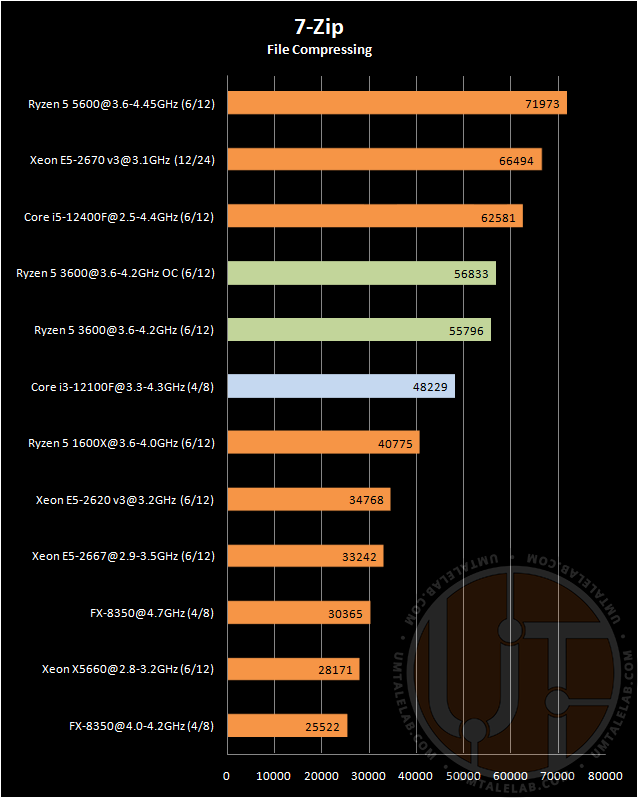
Traditionally, we’ll start with data archiving. File compression in the free 7-Zip archiver is a strong point of AMD processors with a third-level large cache. Thanks to this feature, Ryzen 5 3600 demonstrates extremely high results, outperforming Core i3-12100F by 15%.
Overclocking RAM brings only 2% performance gain to AMD processor.
3D rendering
Blender
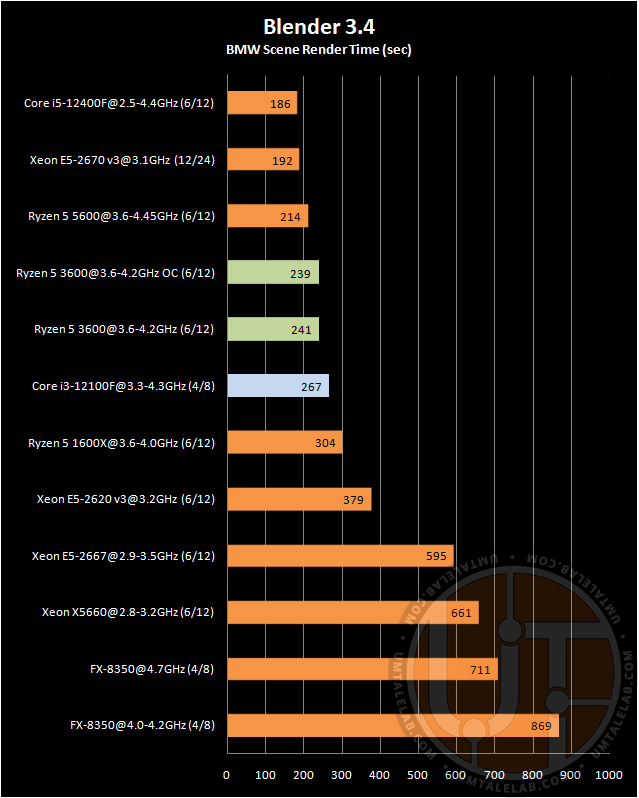
Blender Open Data Benchmark
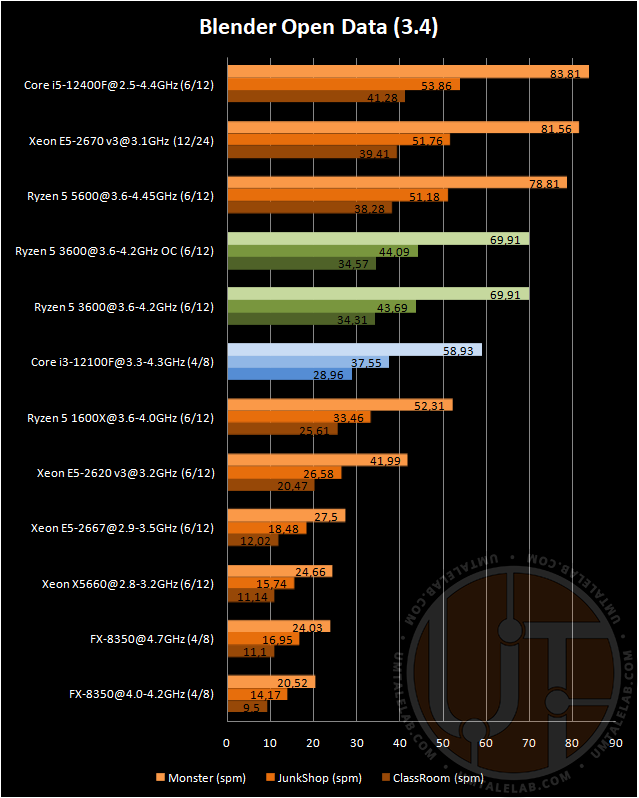
Cinebench R23
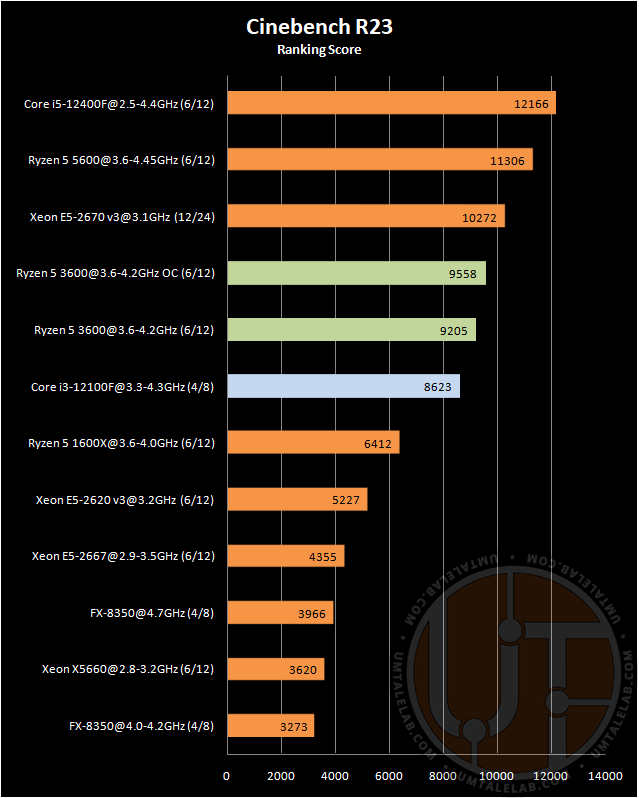
V-Ray 4 Benchmark
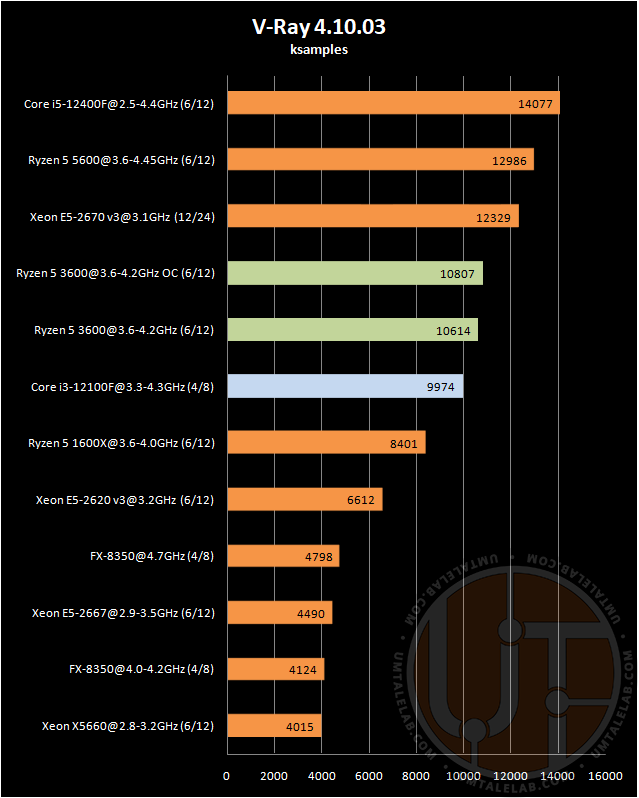
xNormal, AO & NM Map render
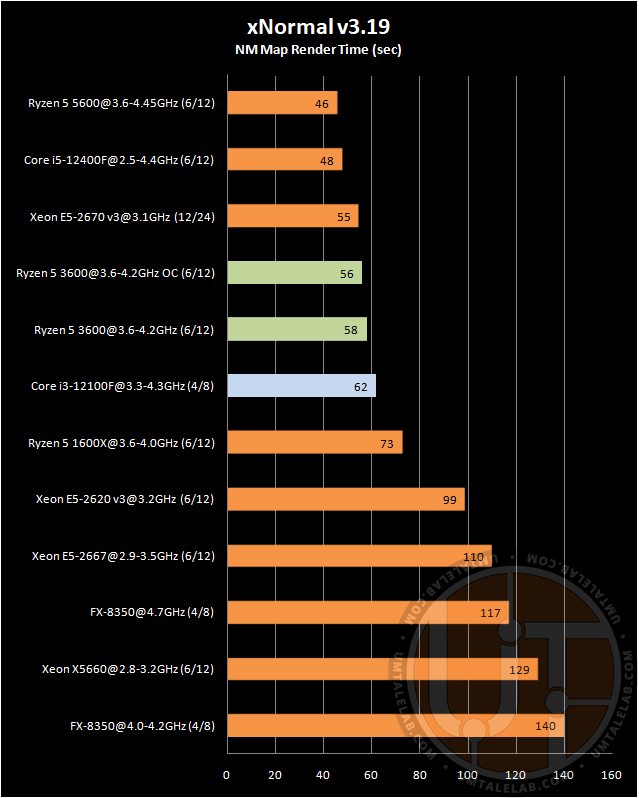
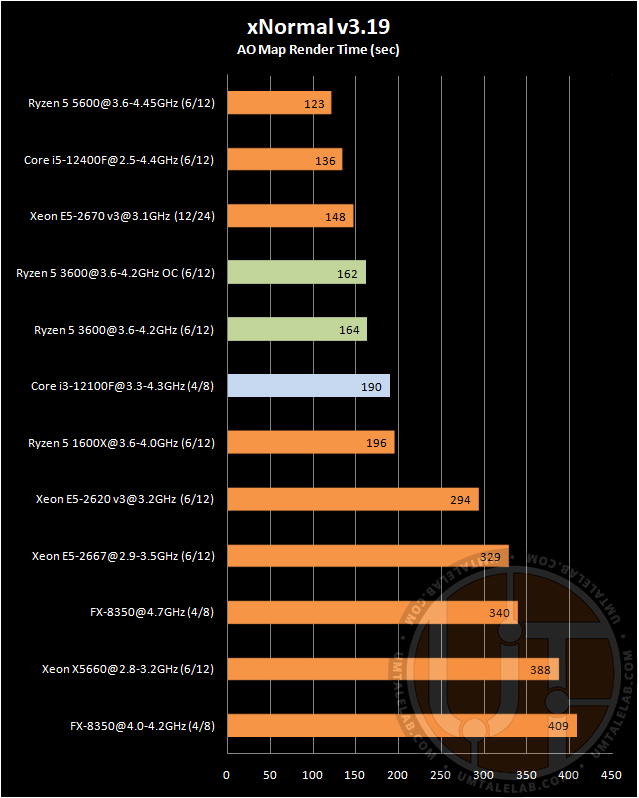
In 3D content rendering situation is quite ambiguous: of course, in each of the test packages 6-core Zen 2 was able to beat 4-core Alder Lake, but the degree of superiority varies greatly.
Rendering the BMW-CPU scene in Blender 3.4, Ryzen 5 3600 chip was able to finish 10% faster than Core i3-12100F, while Blender Open Data Benchmark reported a more impressive 19% superiority of the 6-core Zen 2. Cinebench R23 and V-Ray 4 Benchmark showed only a 7% gap between the 3600 and the i3-12100F.
Baking textures in xNormal is also faster on the AMD product, though the difference between Normal-map and Ambient occlusion-map is noticeable to the naked eye. Normal-map relatively simple rendering speeds are similar on both processors (Zen 2 is only 5% faster), but when baking a AO map, Ryzen 5 3600 pulls ahead by a substantial 14%.
Overclocking RAM brings AMD processor from 2 to 4% performance.
Overall performance
CPU-z Benchmark
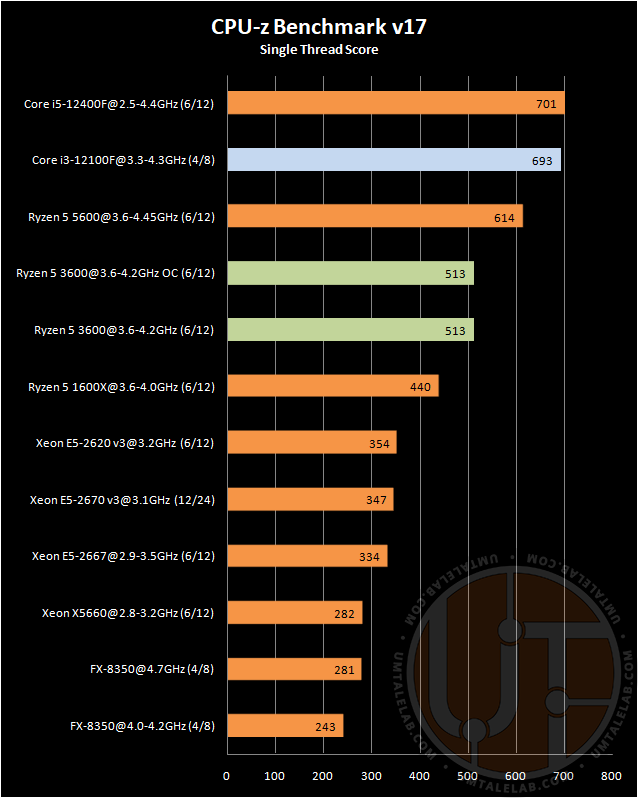
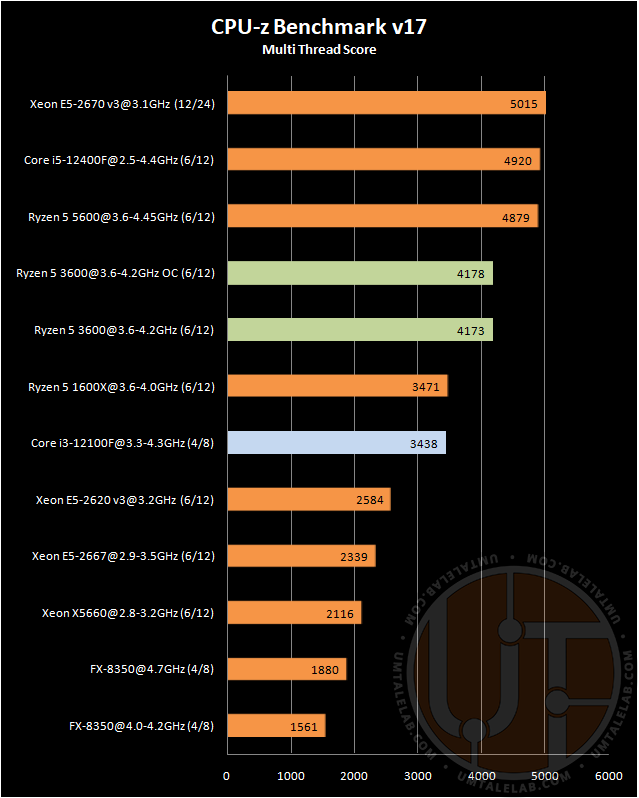
Geekbench 5
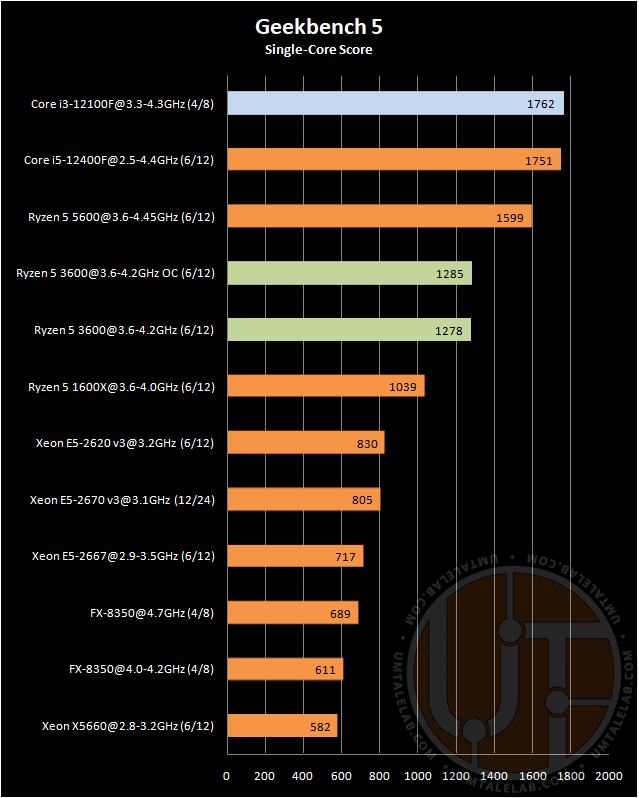
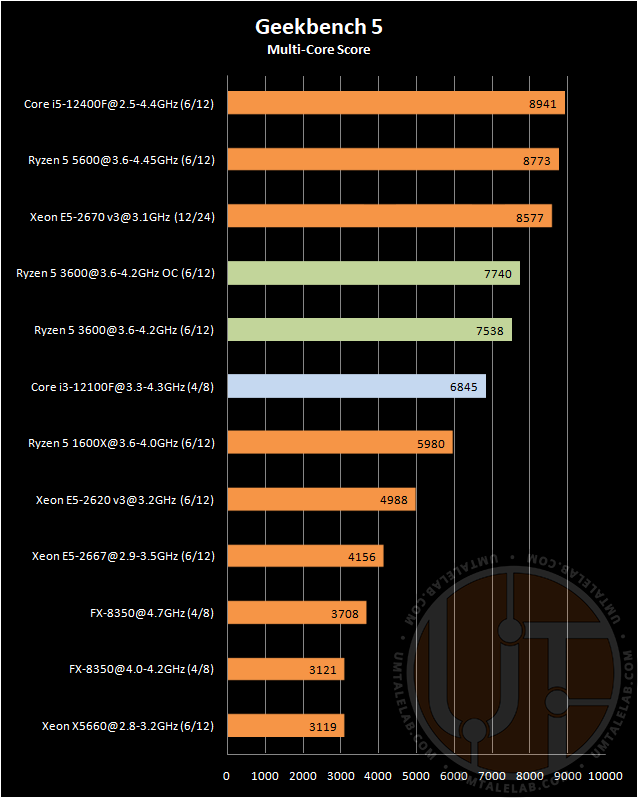
According to CPU-z Benchmark and Geekbench 5, the single-threaded performance of Core i3-12100F is better than Ryzen 5 3600 by 35% and 37% respectively. Meanwhile, multi-threaded processing speed is better than the 6-core Zen 2 by 21% and 10%.
Overclocking the RAM brings AMD processor an additional 3% performance in multi-threaded tests.
Video encoding
HandBrake, AV1, 2160p, 60FPS
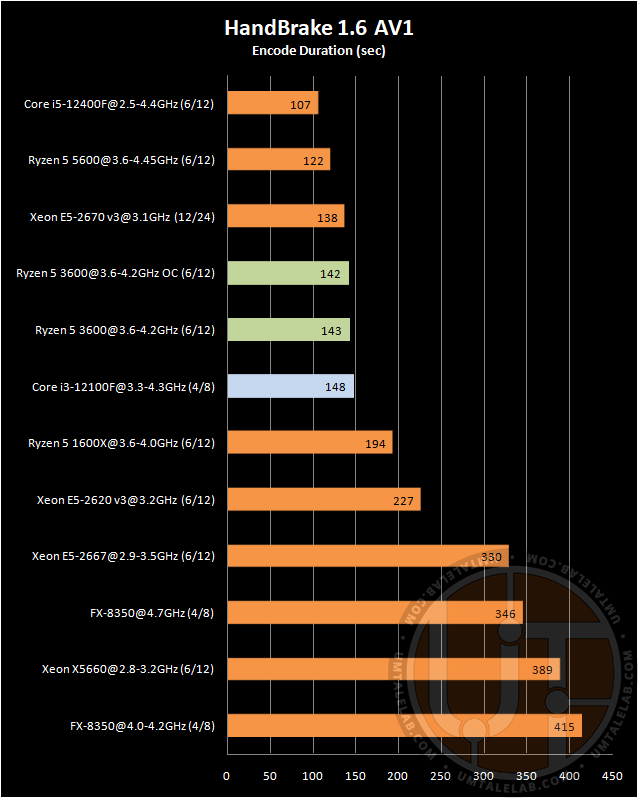
HandBrake, H265, 2160p, 60FPS
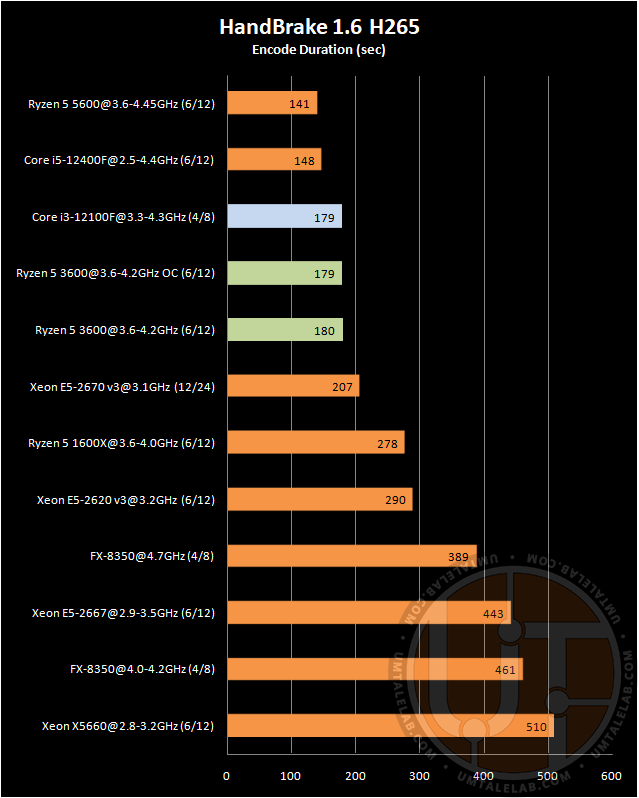
When transcoding video with the HandBrake utility to AV1 format (4K, 60FPS), Ryzen 5 3600 is 3% faster than Core i3-12100F, and when working with H265 codec in 2160p resolution, both processors show identical performance.
Video encoding did not get a significant boost from RAM overclocking.
Internet browsing
JetStream 2
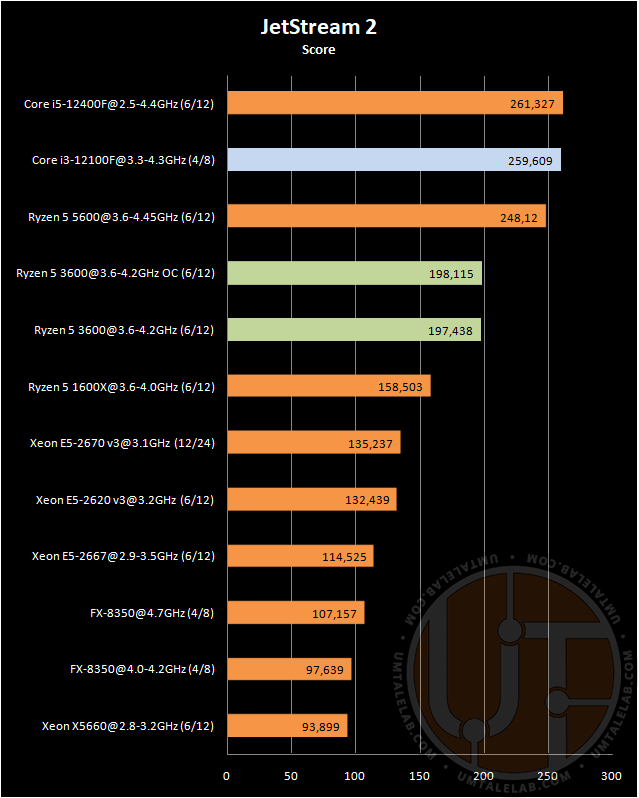
Speedometer 2
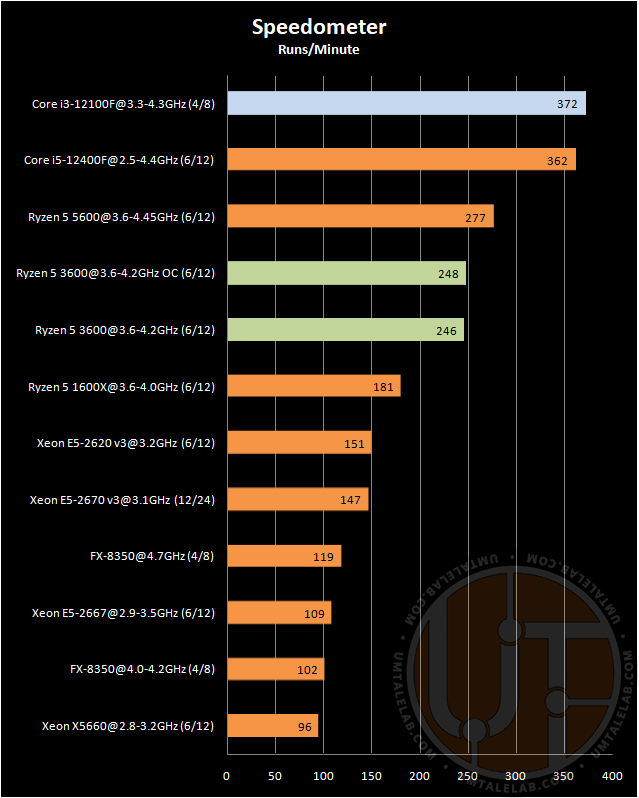
Kraken
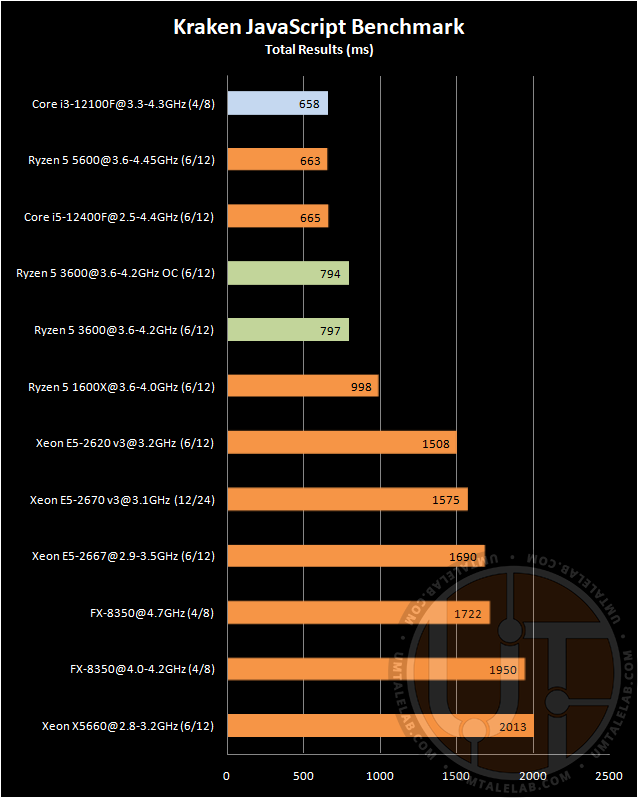
In the JetStream 2 benchmark, which tests JavaScript and WebAssembly performance, the 6-core Zen 2 couldn’t come close to the 4-core Alder Lake. Similar situation is in the Speedometer 2 test, which measures responsiveness of web applications, as well as in Kraken JavaScript Benchmark.
The explanation for these results is extremely trivial: browsers are still unable to use a large number of processor threads, because of which the current Intel Alder Lake architecture, even with only four cores, is significantly faster than the 6-core Zen 2.
Difference between Ryzen 5 3600 and Core i3-12100F in 13 applications
| App: | Ryzen 5 3600 | Core i3-12100F |
|---|---|---|
| 7-Zip | 15.69% | |
| Blender | 9.74% | |
| Blender Open Data Benchmark | 18.63% | |
| Cinebench R23 | 6.75% | |
| V-Ray 4 Benchmark | 6.42% | |
| xNormal NM | 6.45% | |
| xNormal AO | 13.68% | |
| CPU-z Benchmark (ST) | 35.09% | |
| CPU-z Benchmark (MT) | 21.38% | |
| Geekbench 5 (ST) | 37.12% | |
| Geekbench 5 (MT) | 10.12% | |
| HandBrake, AV1 | 3.38% | |
| HandBrake, H265 | 0.56% | |
| JetStream 2 | 44.69% | |
| Speedometer 2 | 51.22% | |
| Kraken | 17.44% |
While creating digital content, Ryzen 5 3600 showed itself not badly, but due to weak single-threaded performance it was extremely hard to work in browsers. However, it should be noted that even in well-optimized for multithreading projects the 6-core Zen 2 could not demonstrate a significant gap from the 4-core Core i3-12100F.
It should also be noted that AMD’s 6-core couldn’t make a worthy competition in creating 3D content to the ultra-budget 12-core Xeon E5-2670 v3, which also doesn’t help him.
Basically, we can already see how Ryzen 5 3600 will show itself in games based on these figures, but let’s check it out.
Games, synthetics
3DMark Time Spy
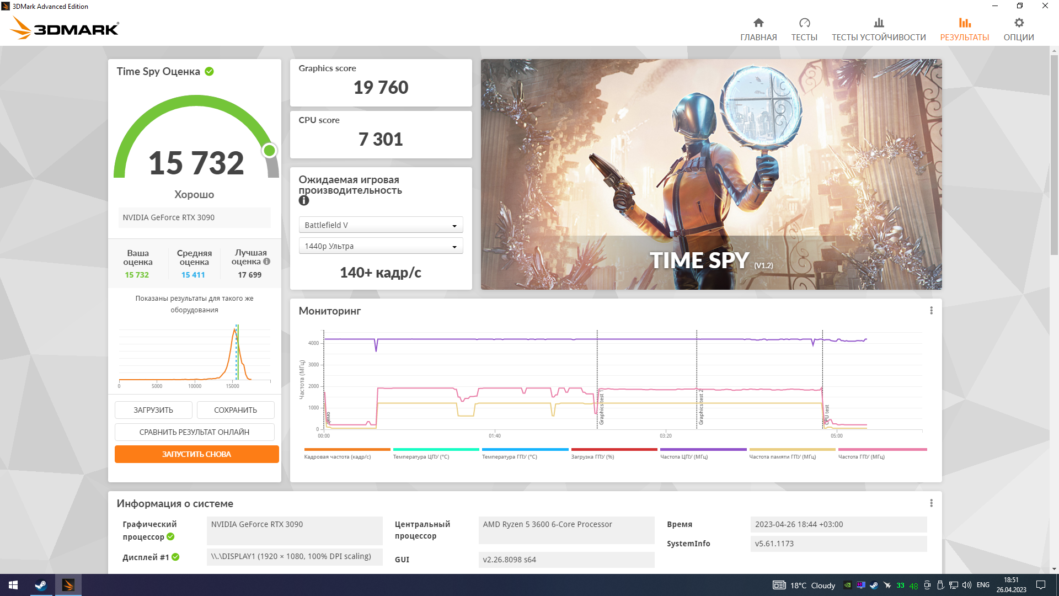
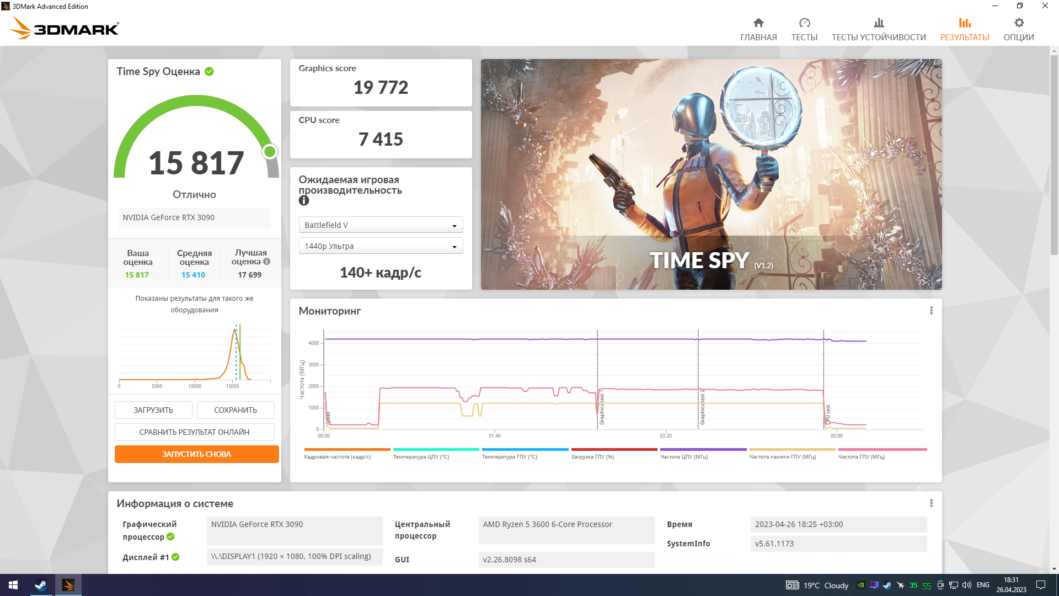
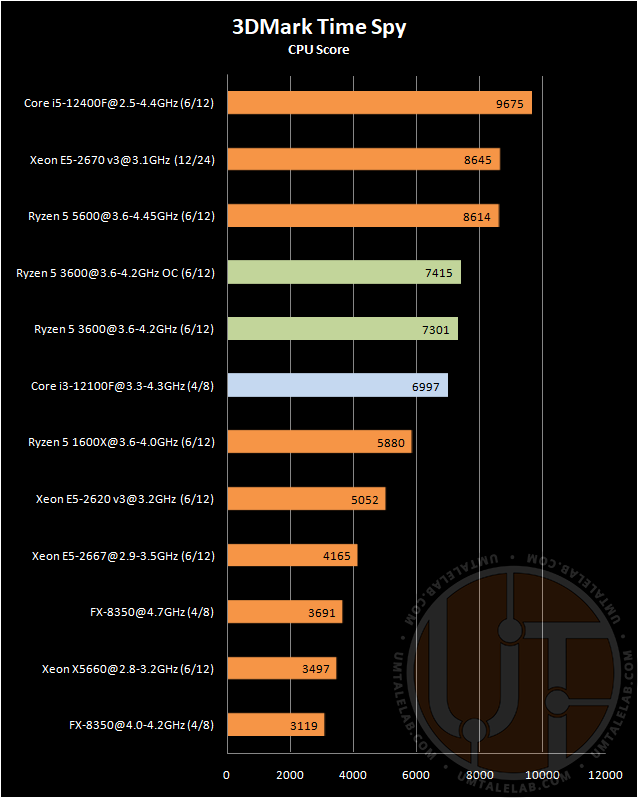
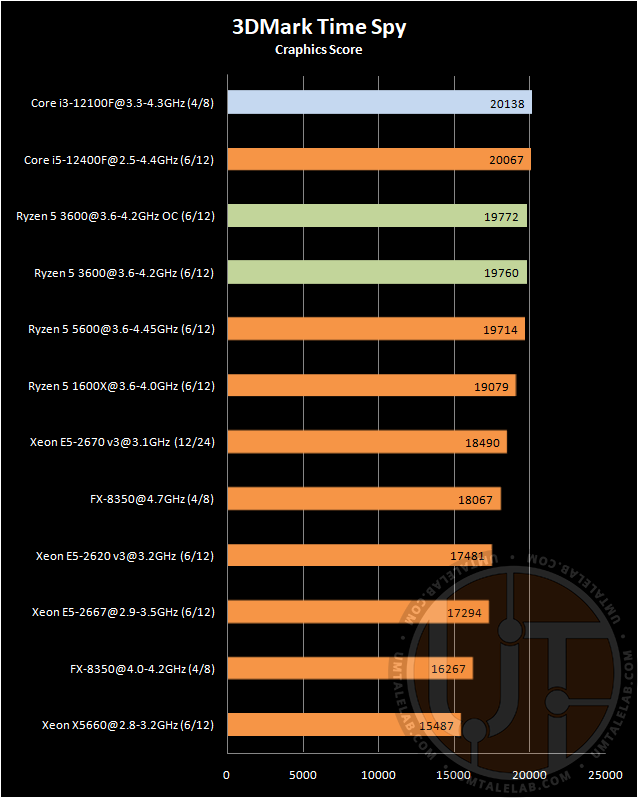
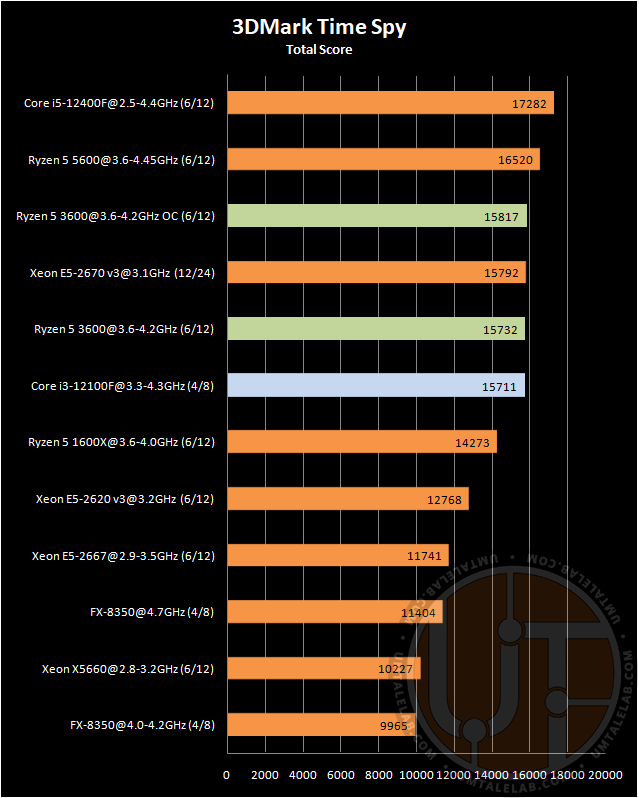
In the gaming synthetic 3DMark Time Spy, the Ryzen 5 3600 chip had a small lead over the Core i3-12100F in the CPU subtest, while losing out in the graphics subtest.
Games
Assassins Creed Valhalla
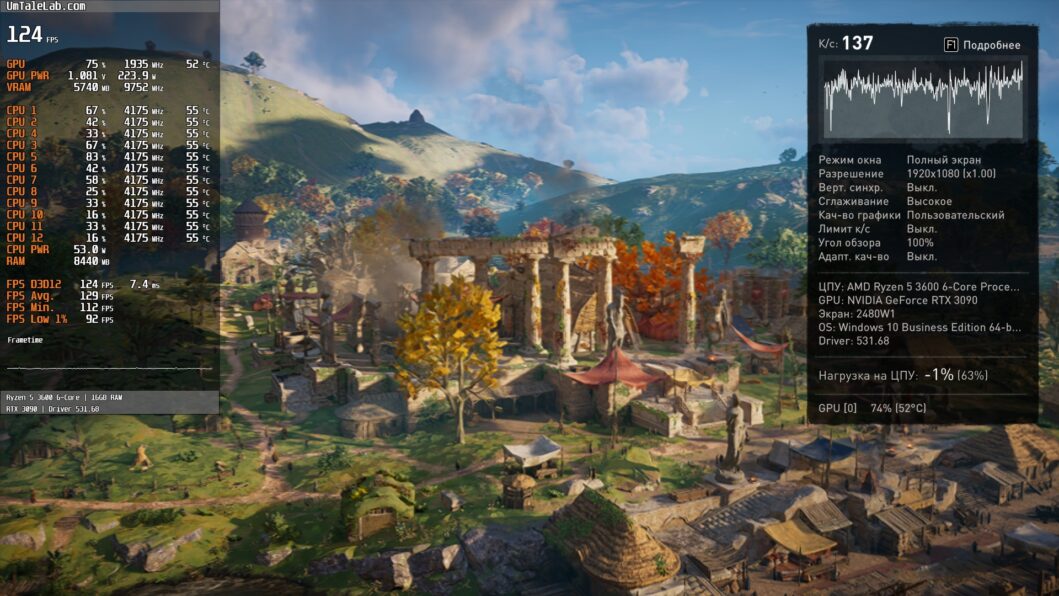
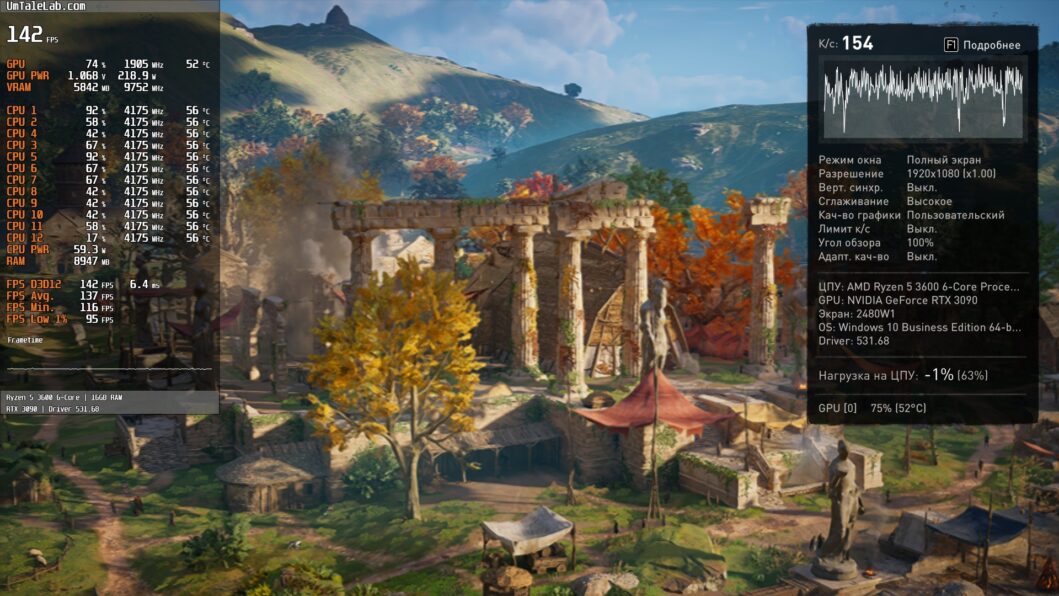
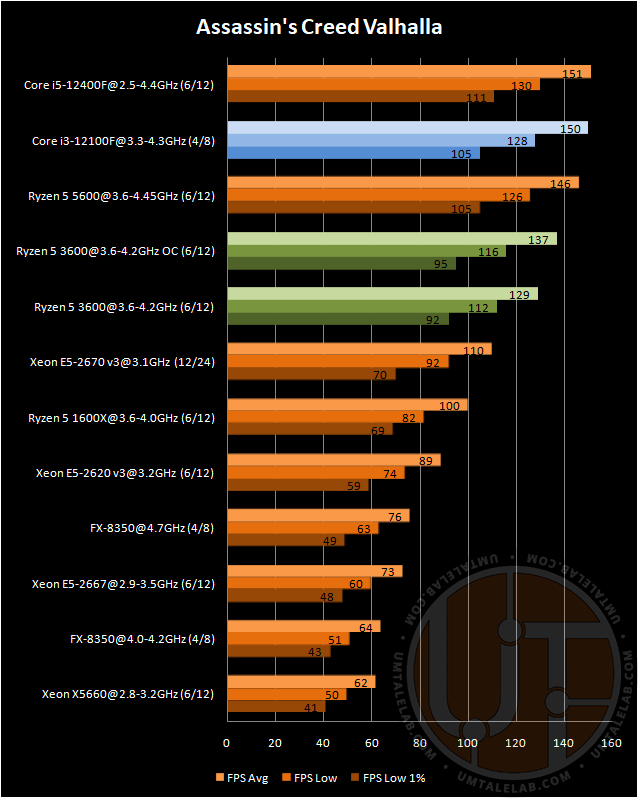
Battlefield 2042
Ray Tracing – ON
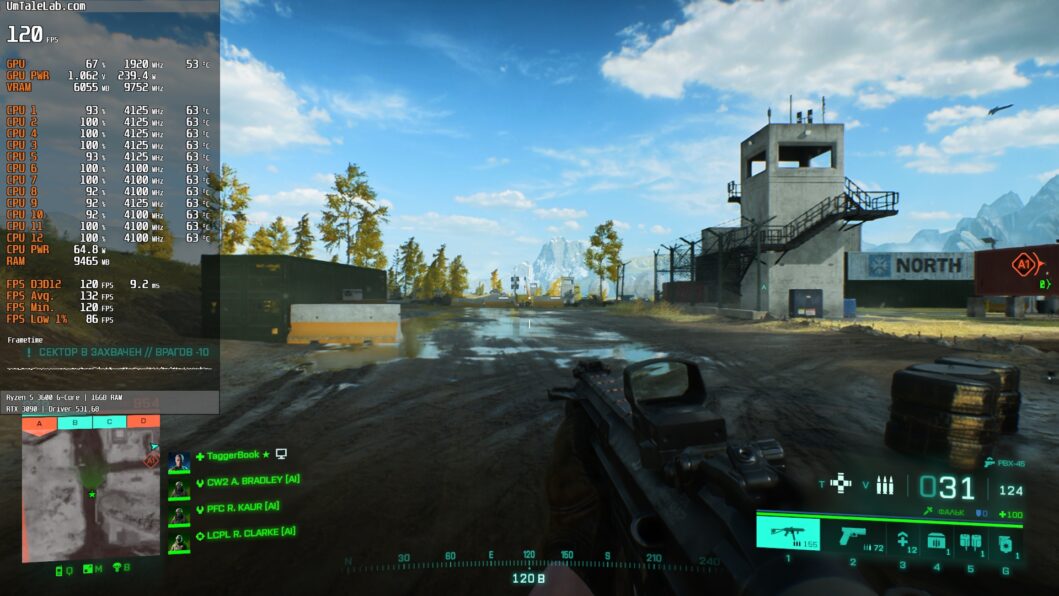
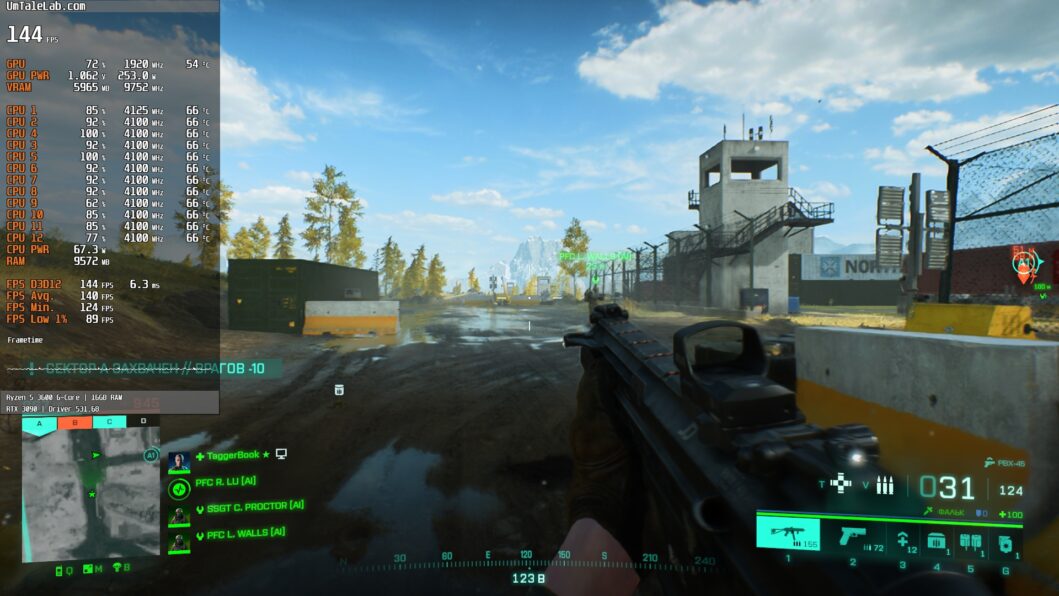
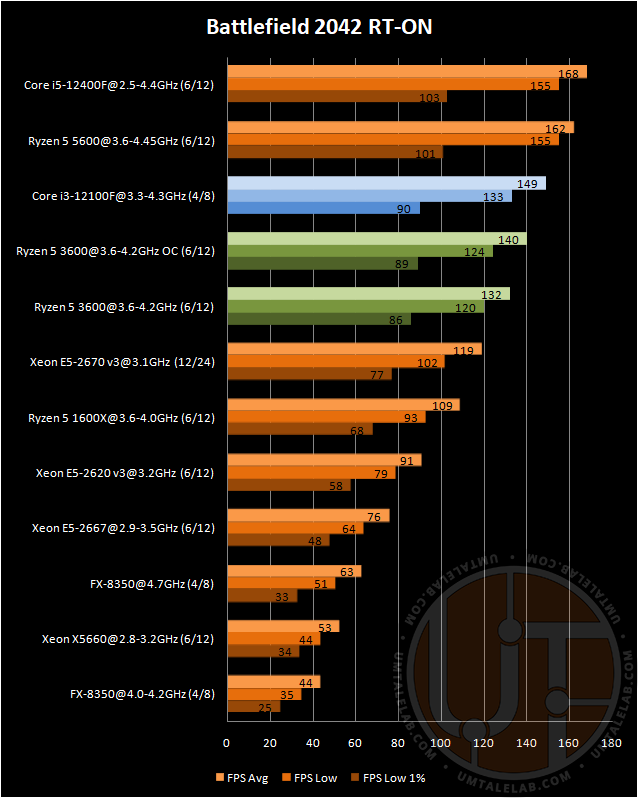
Ray Tracing – OFF
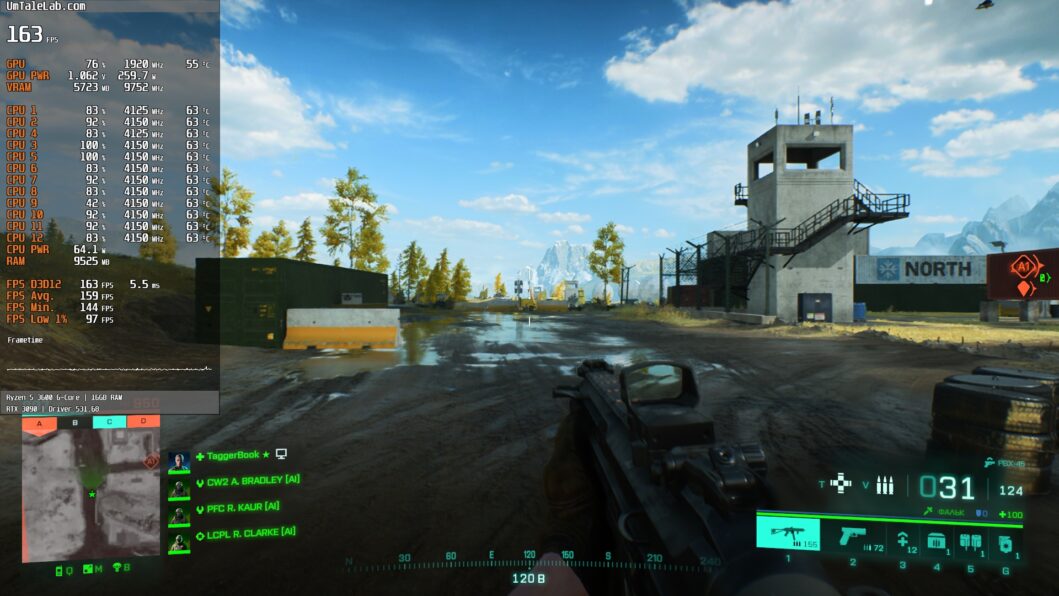
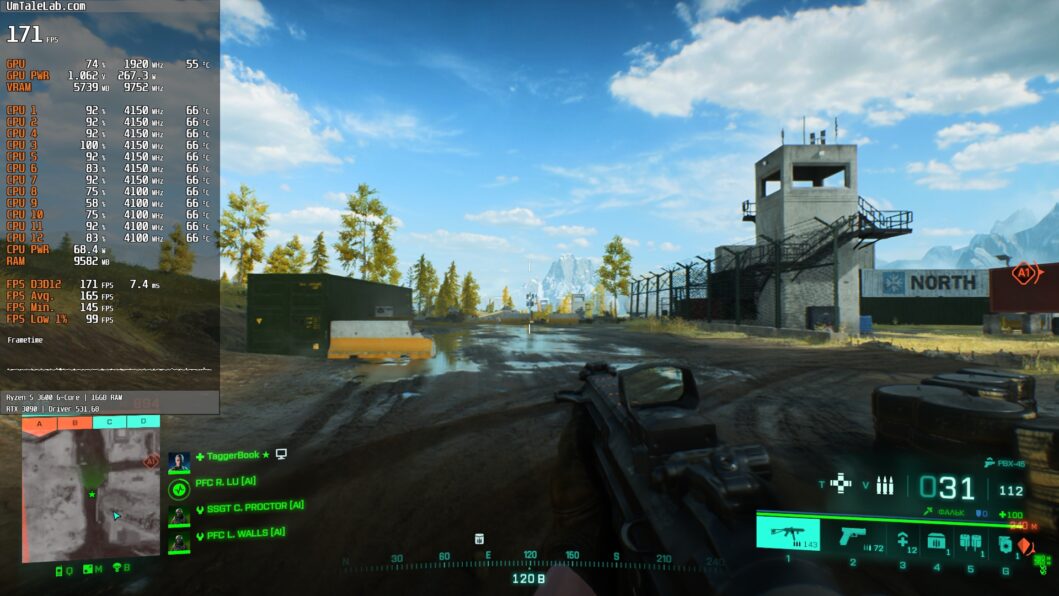
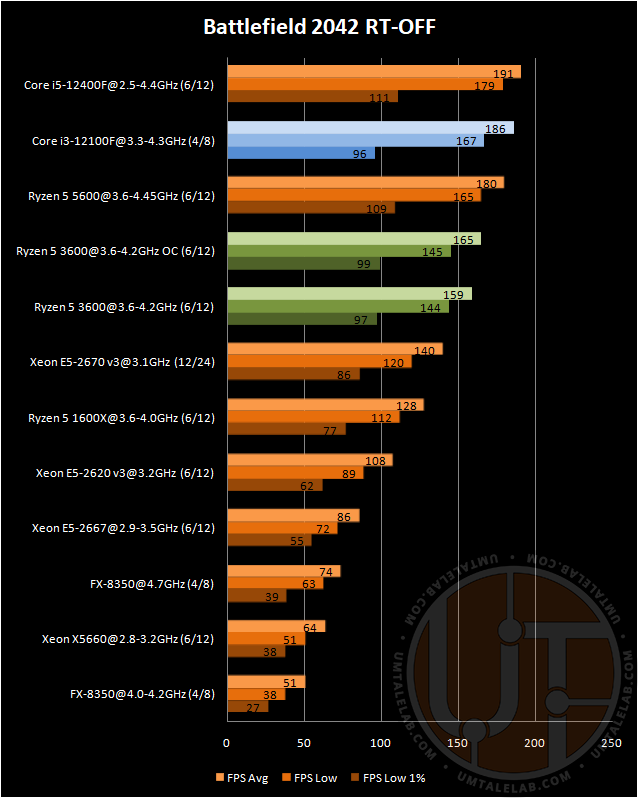
Cyberpunk 2077
Ray Tracing – ON
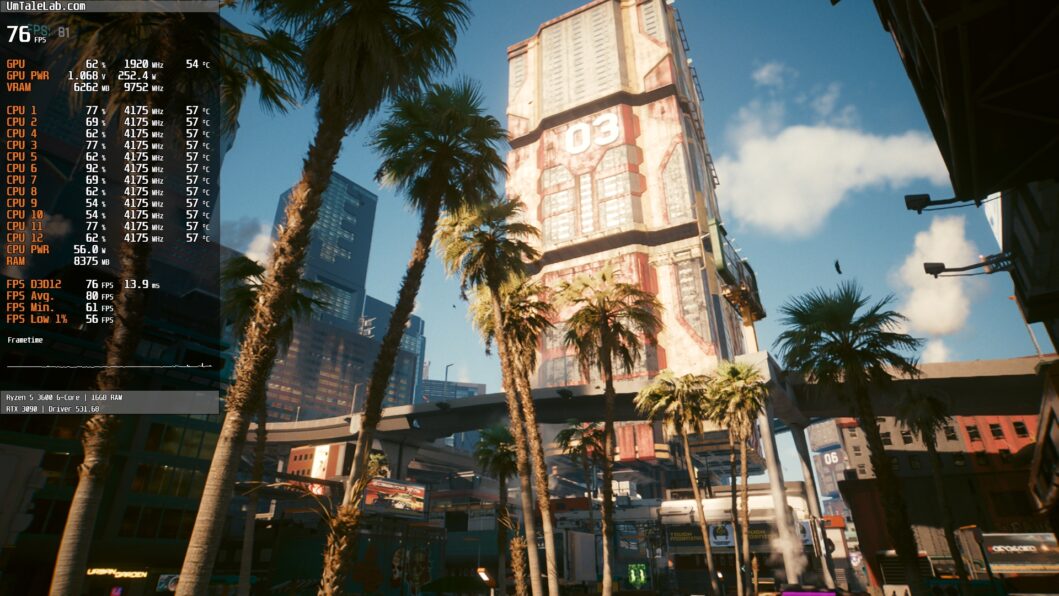
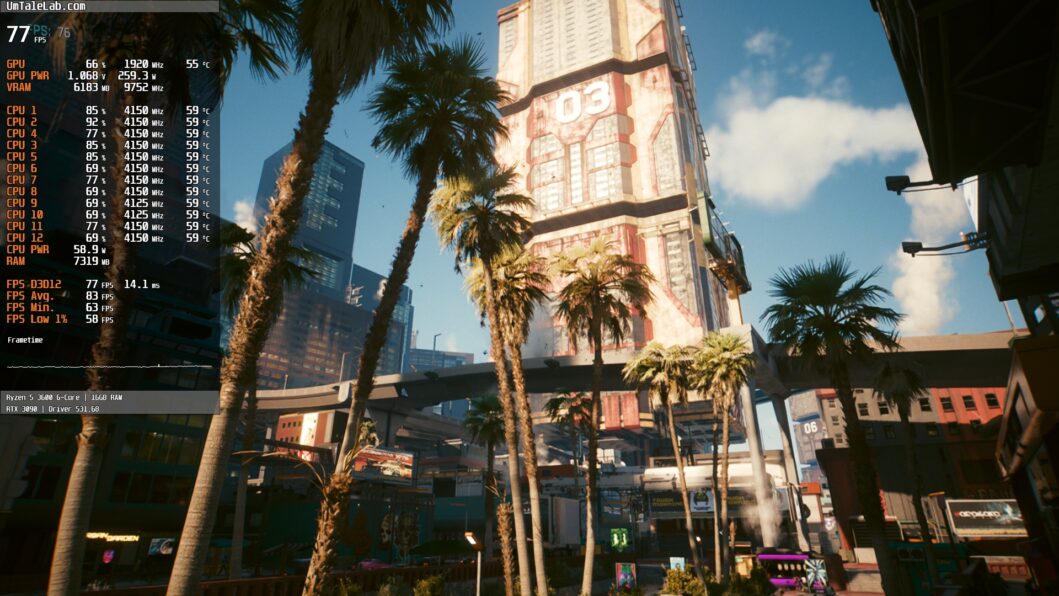
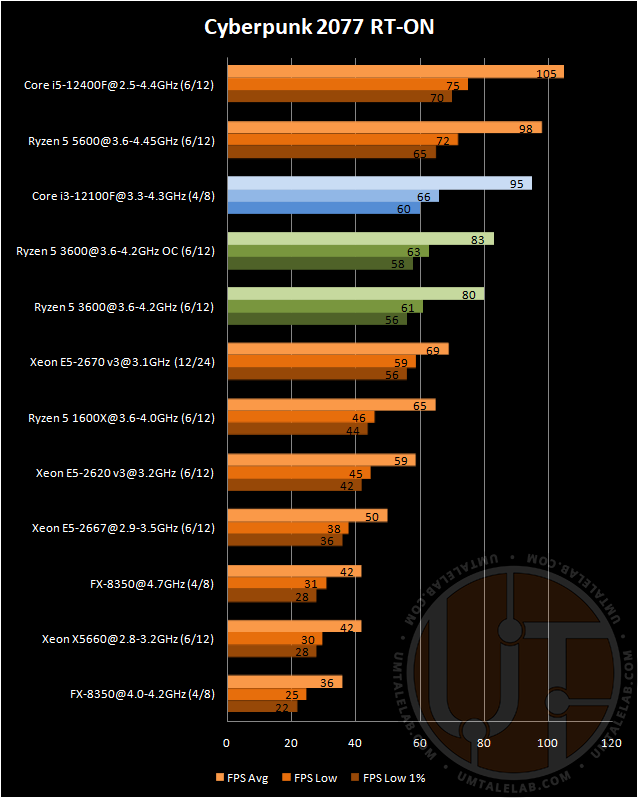
Ray Tracing – OFF
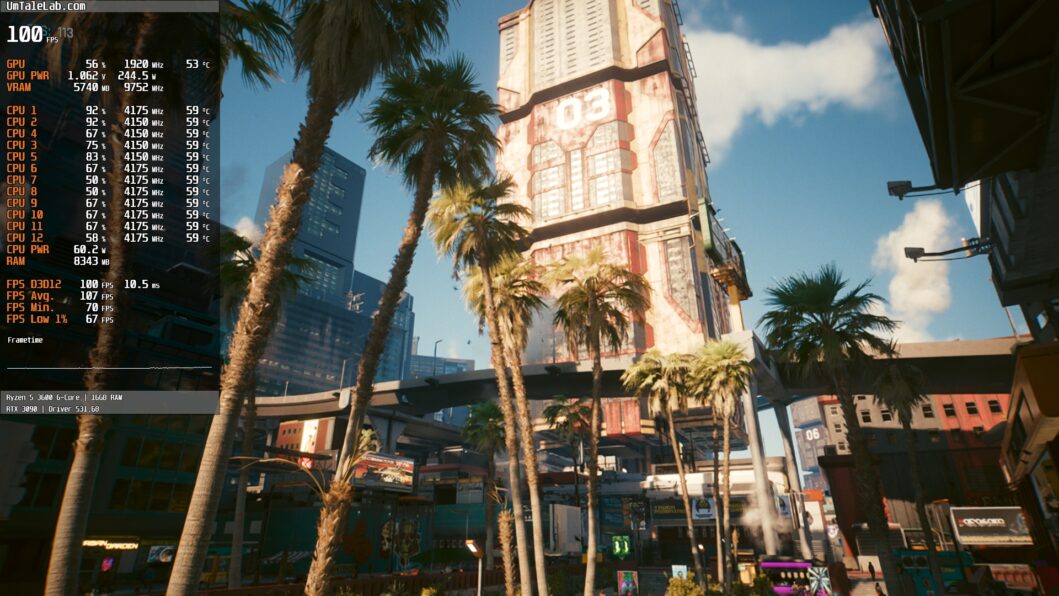
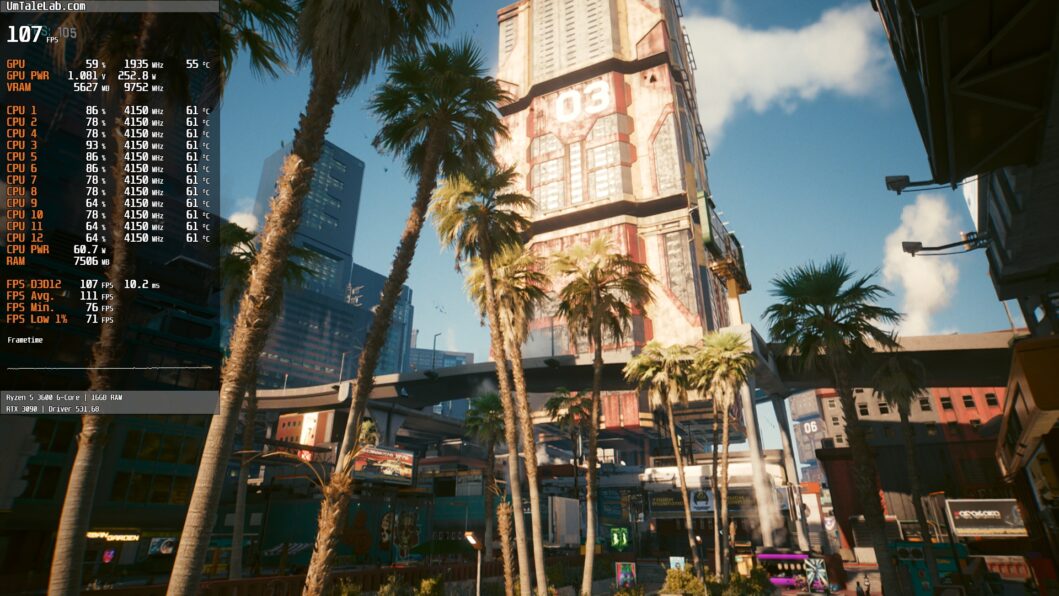
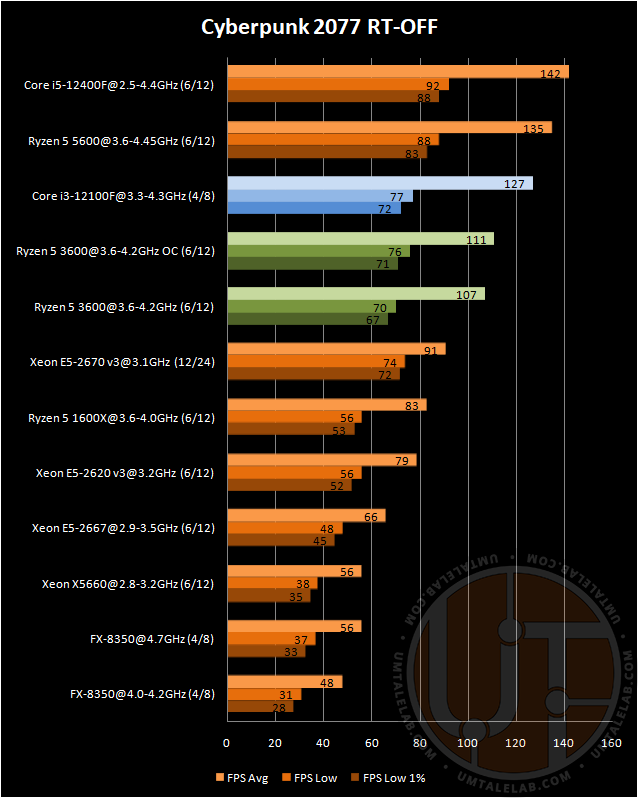
Far Cry 6
Ray Tracing – ON
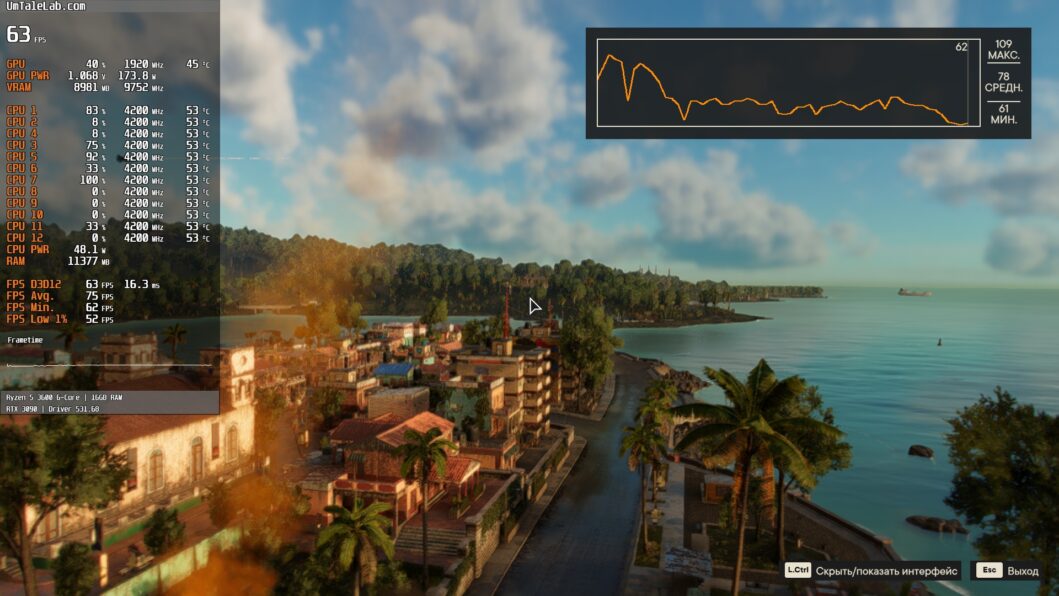
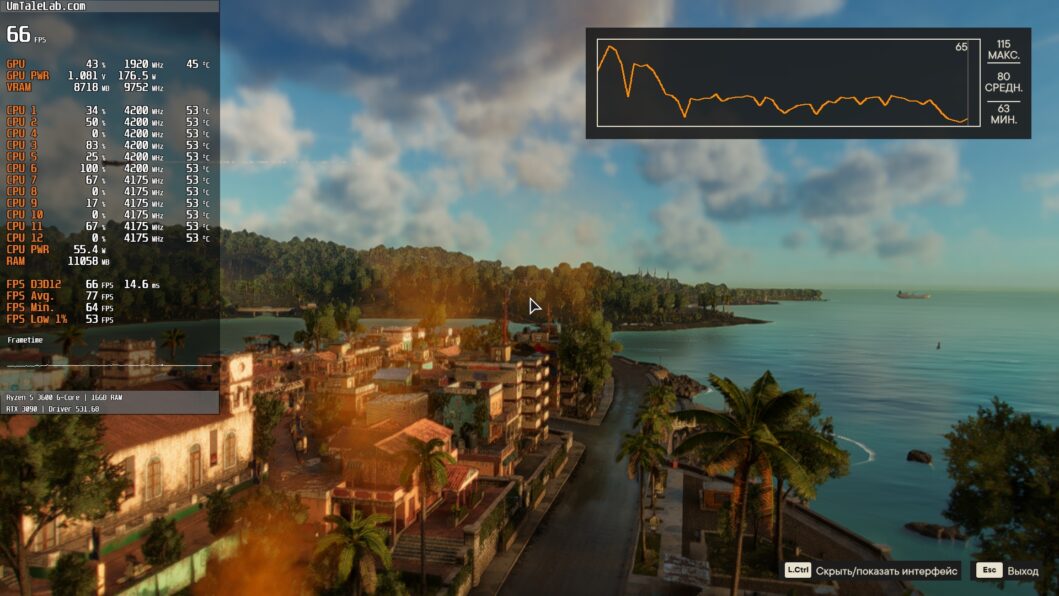
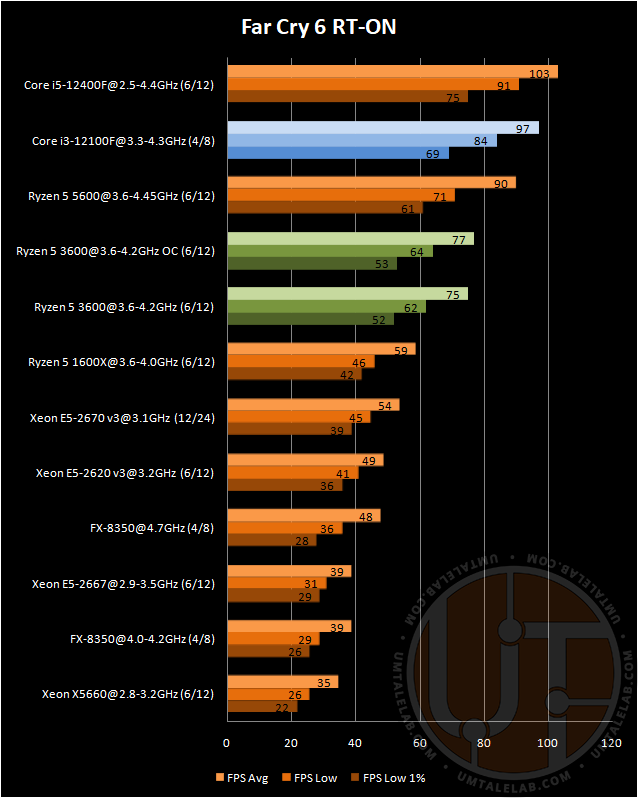
Ray Tracing – OFF
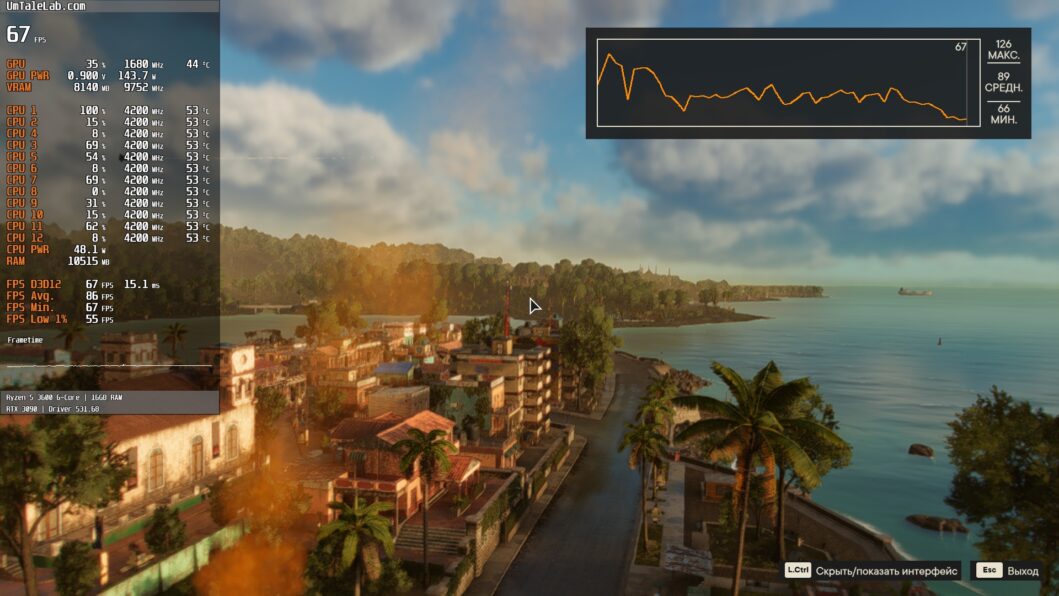
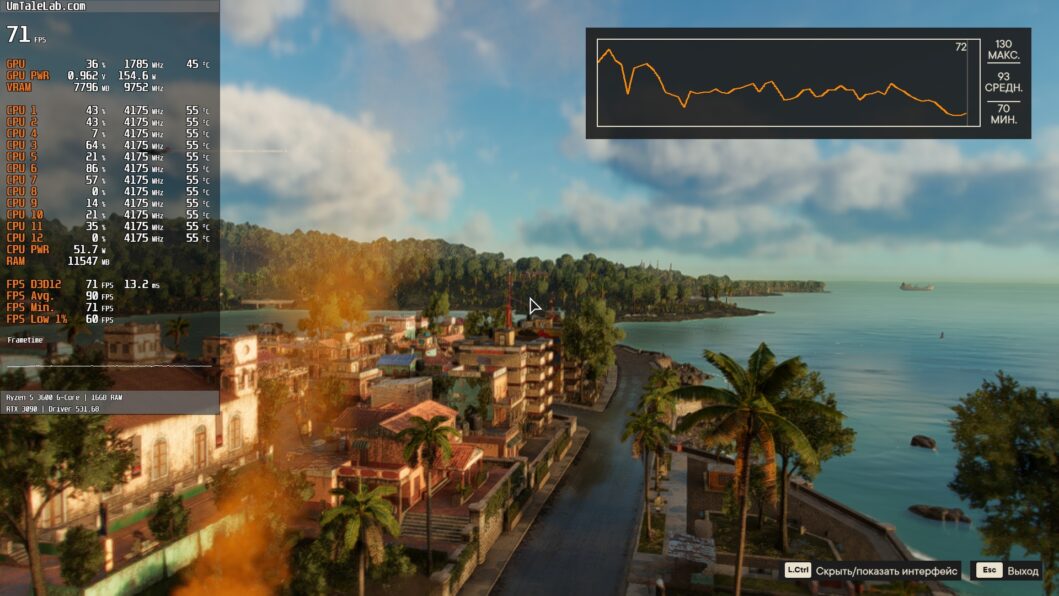
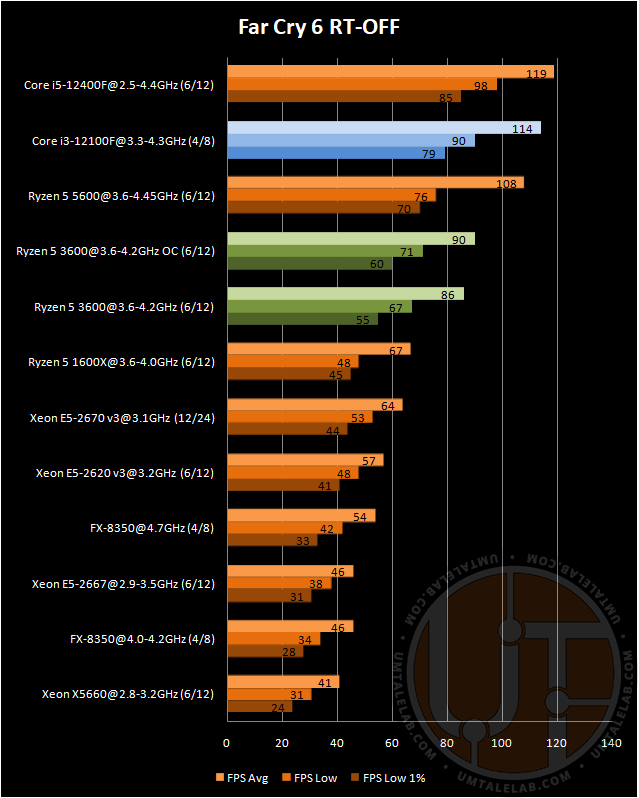
Hogwarts Legacy
Ray Tracing – ON
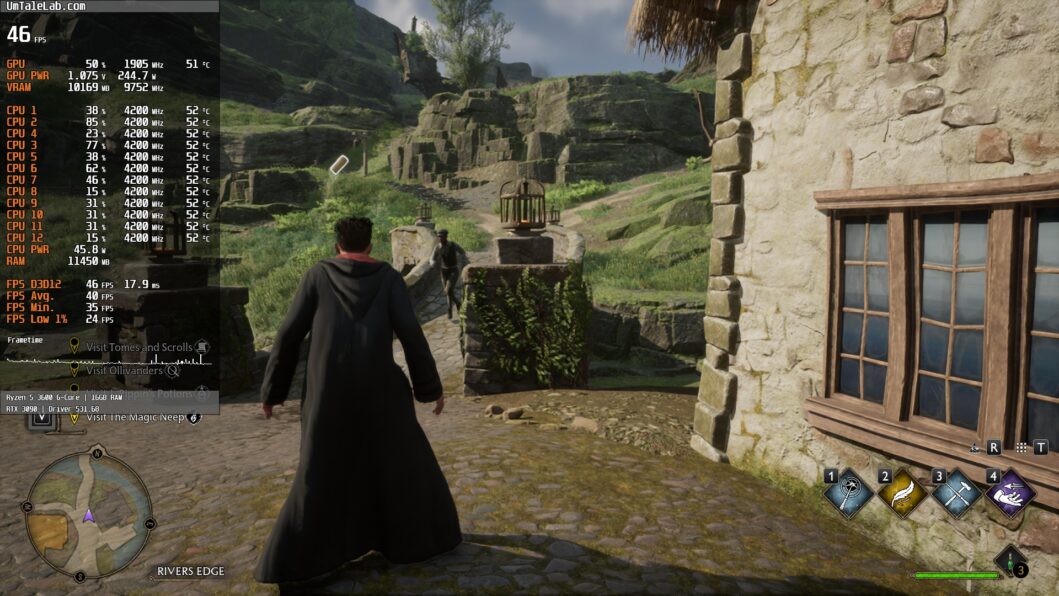
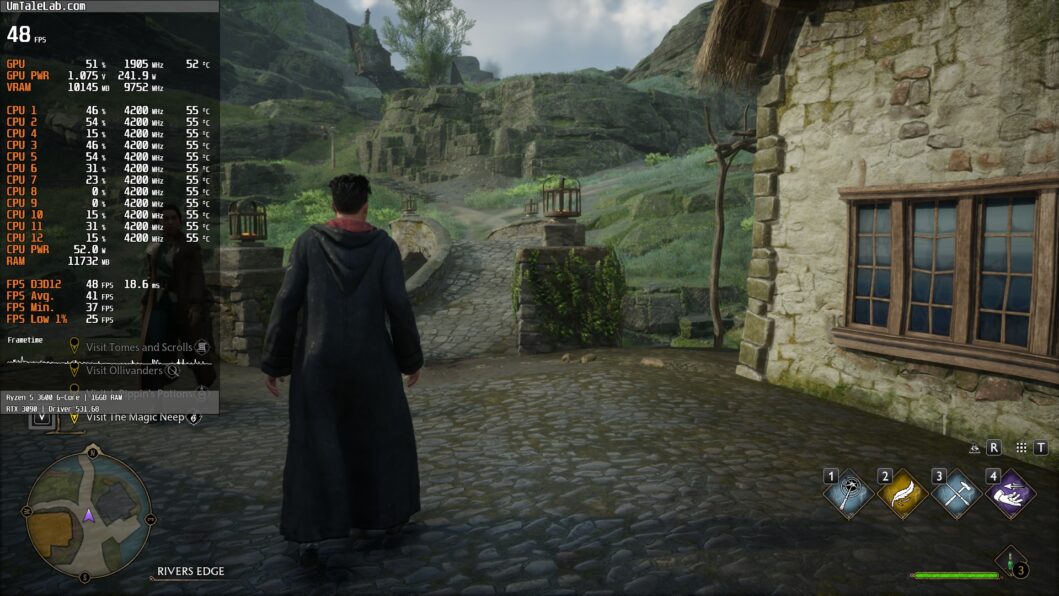
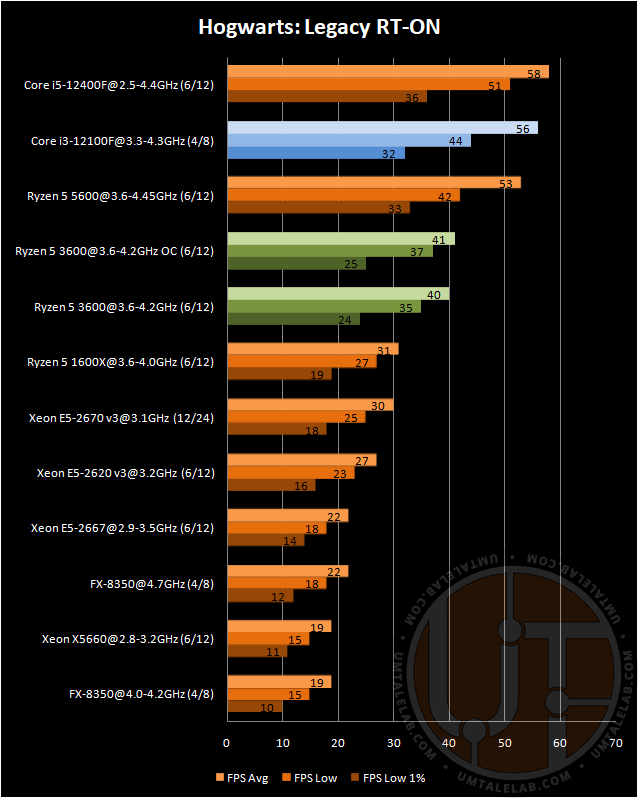
Ray Tracing – OFF
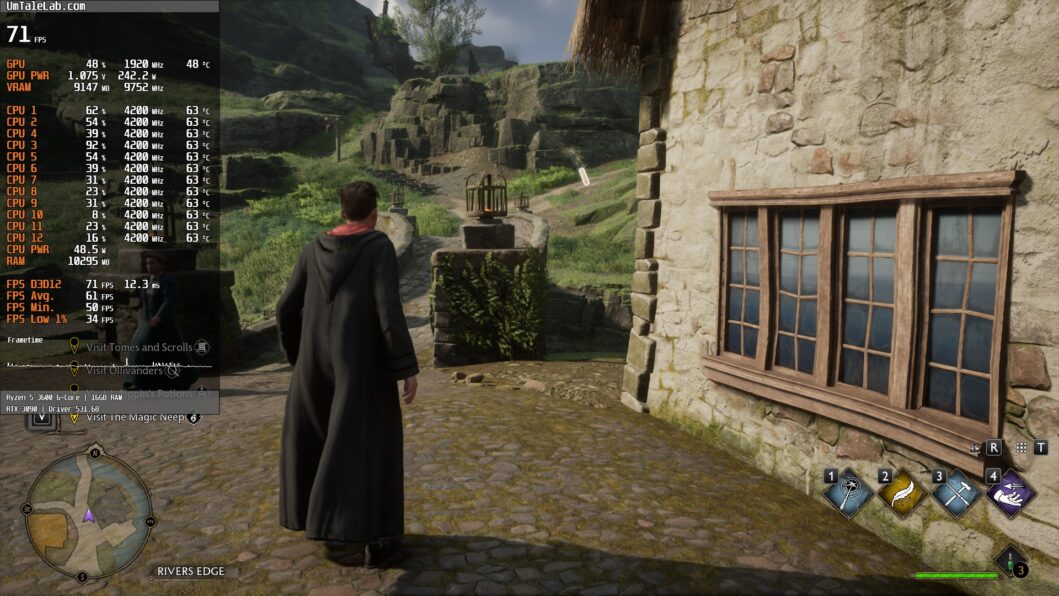
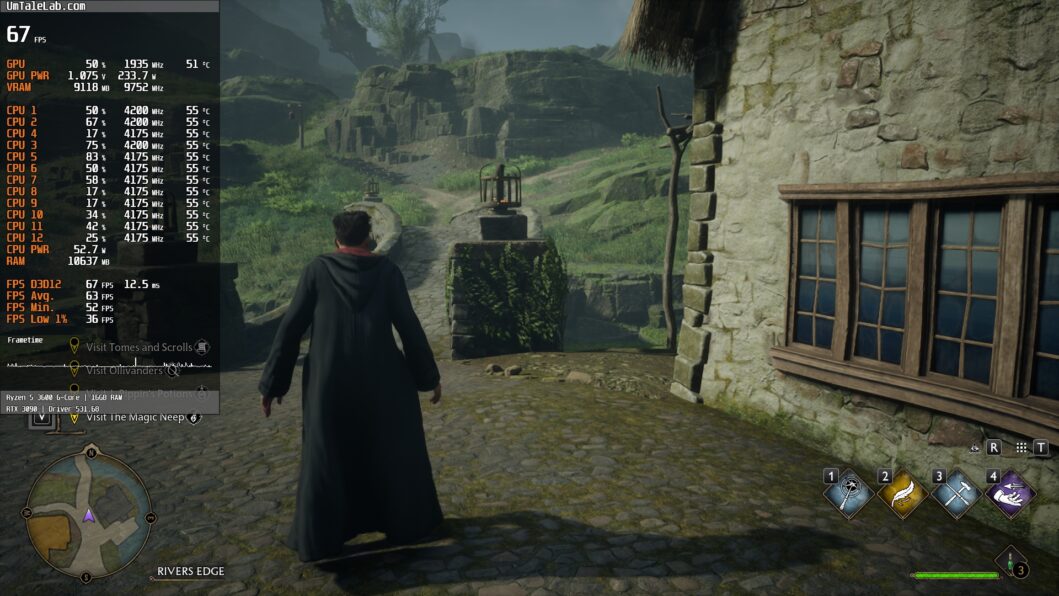
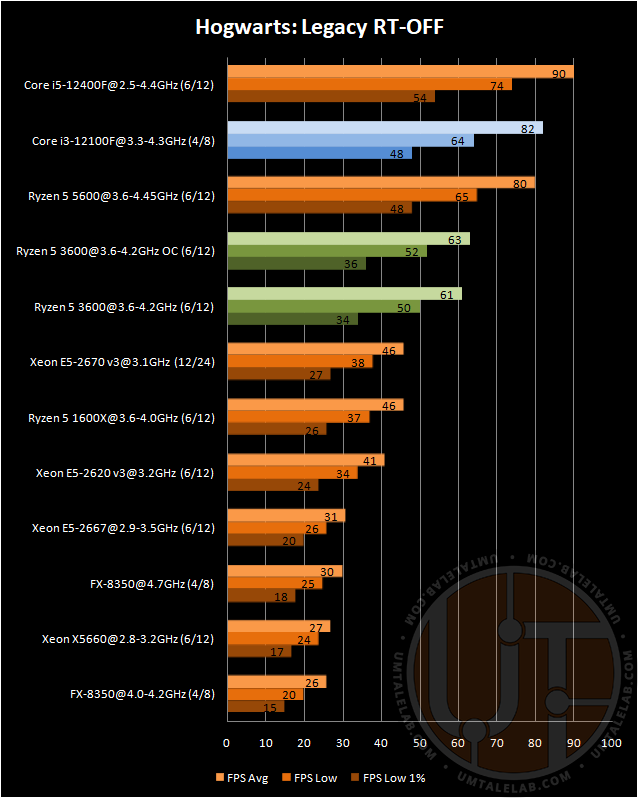
Marvel’s Spider-Man Remastered
Ray Tracing – ON


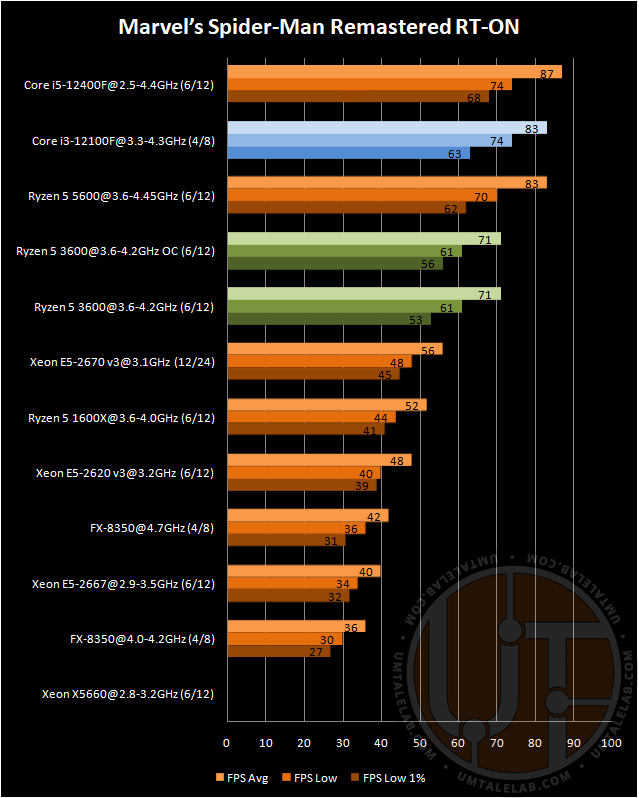
Ray Tracing – OFF


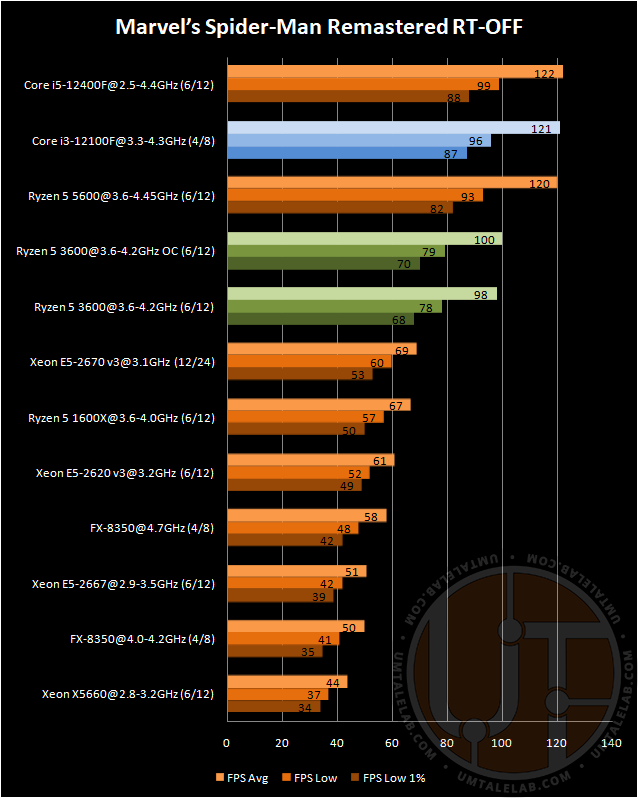
RPCS3 – PlayStation 3 emulator. Red Dead Redemption
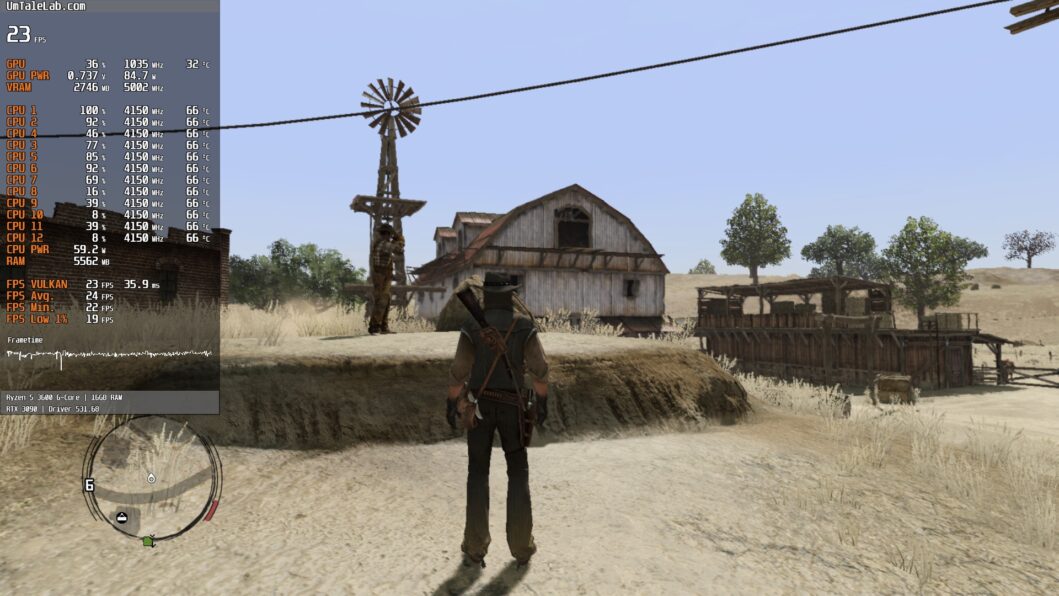
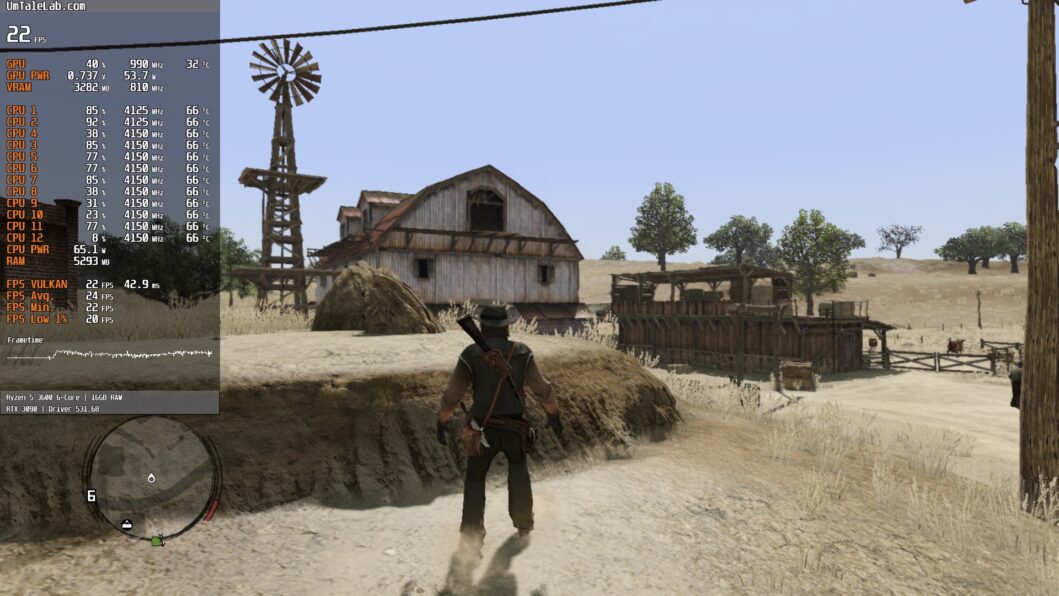
As Host, RSX FIFO accuracy – Atomic, resolution 1080p.
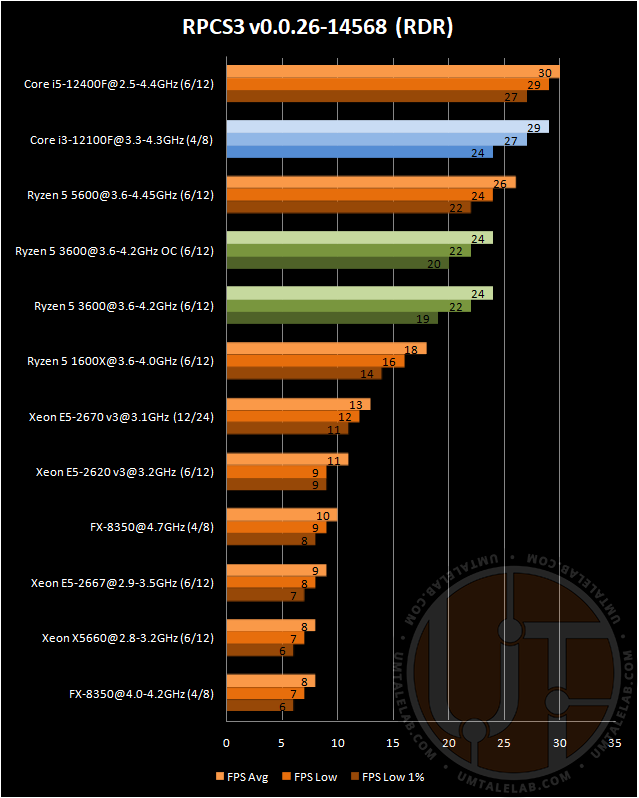
Red Dead Redemption 2
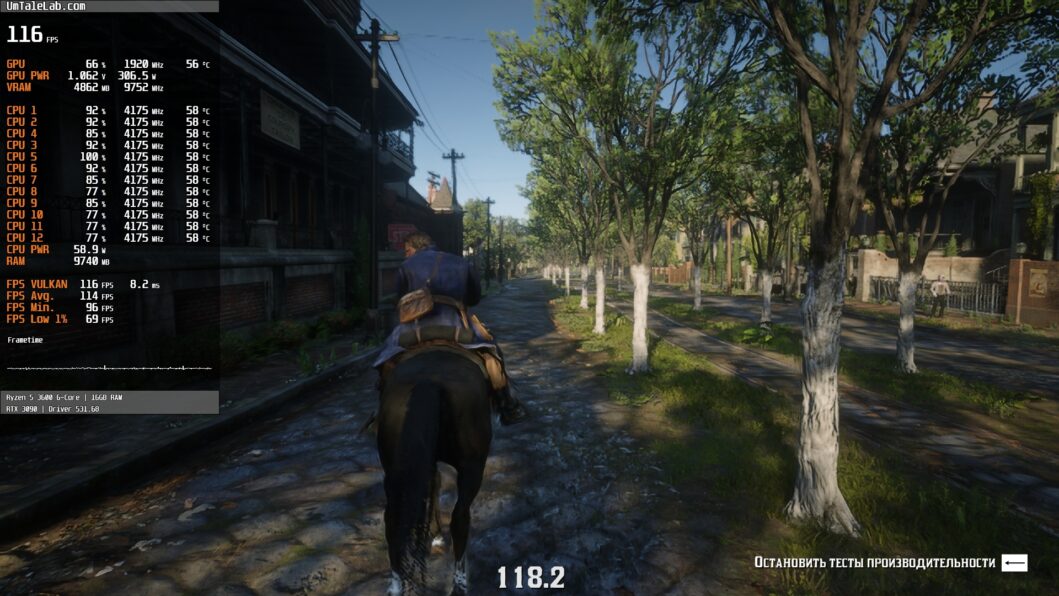
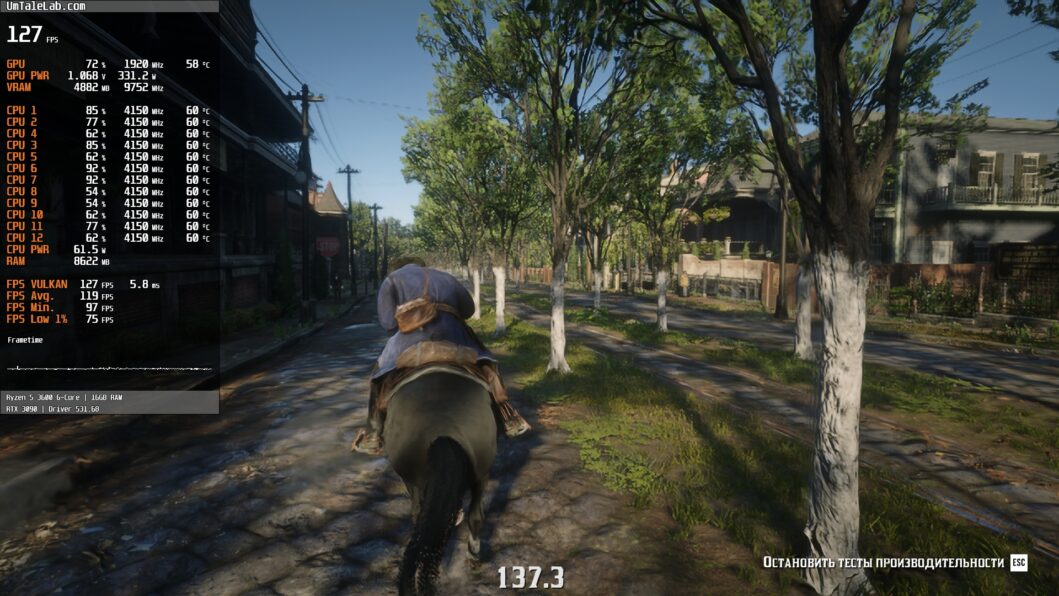
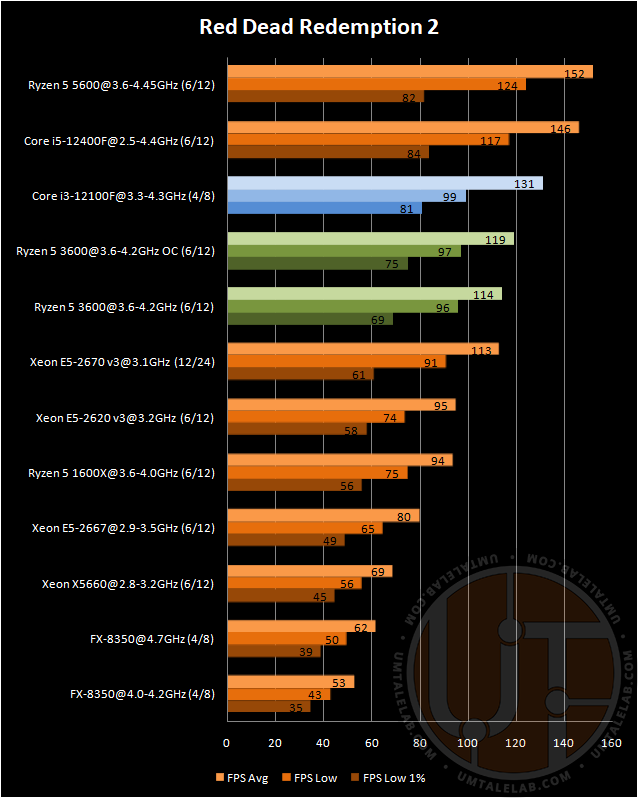
The Riftbreaker
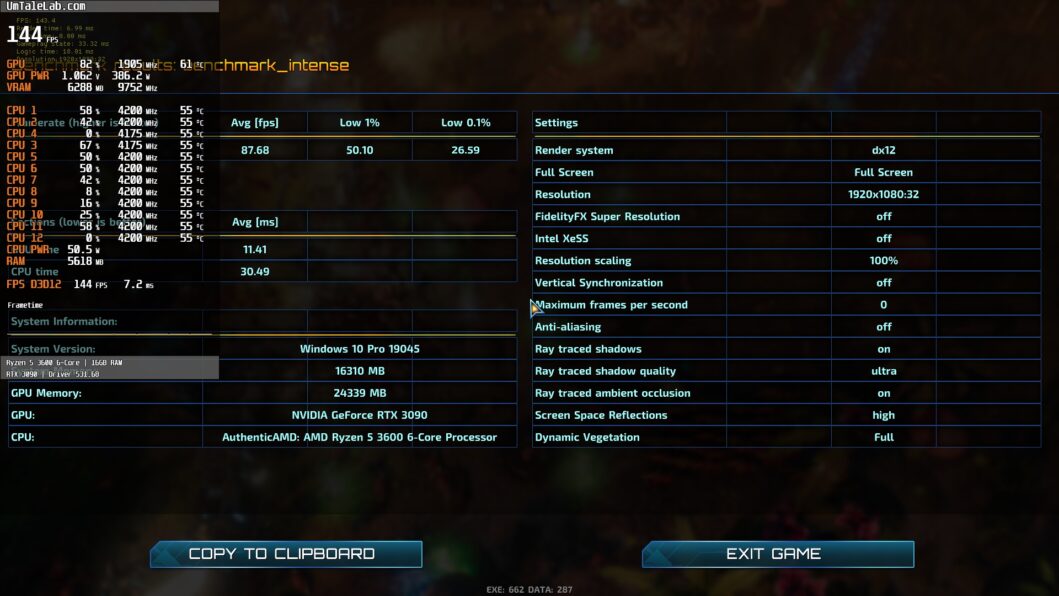
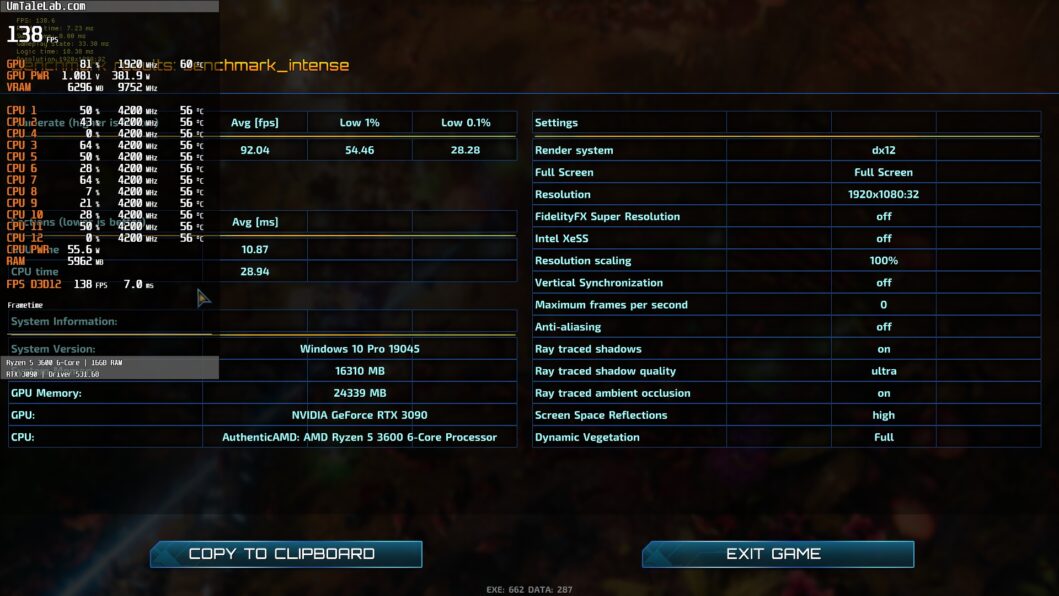
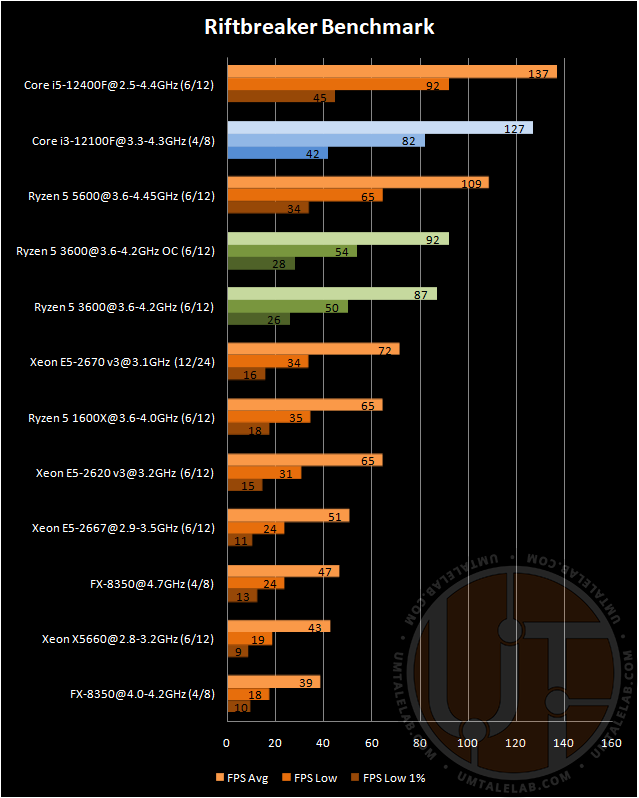
The Witcher 3 Next-Gen Update 4.02 (Complete Edition)
Ray Tracing – ON
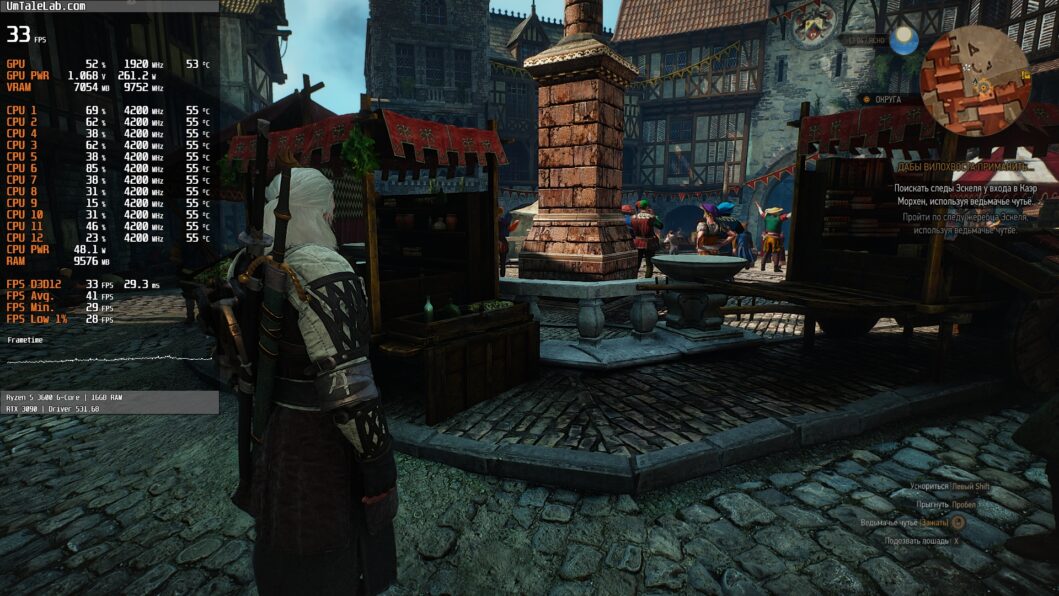
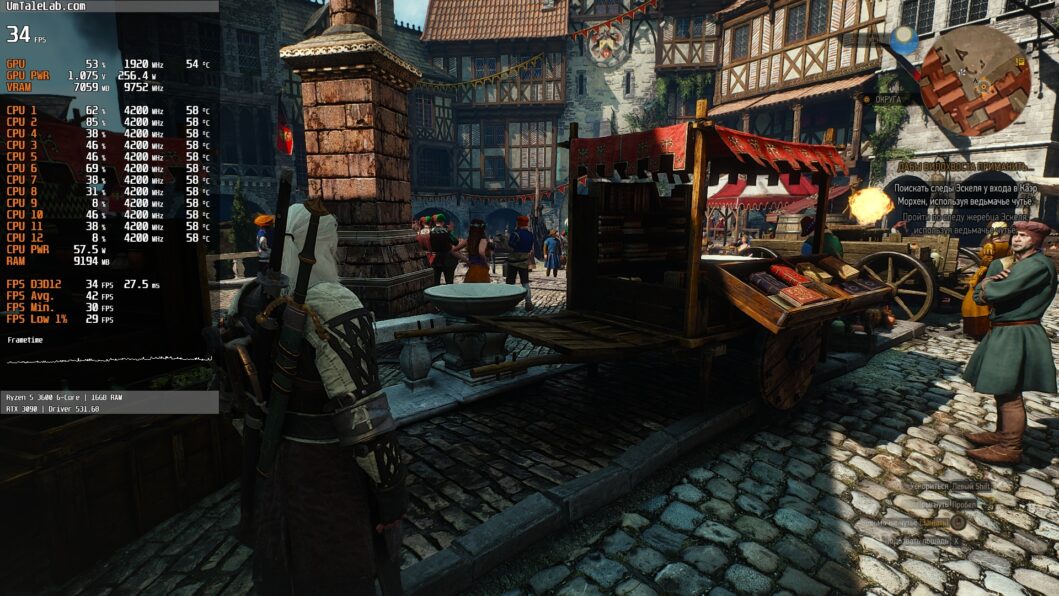
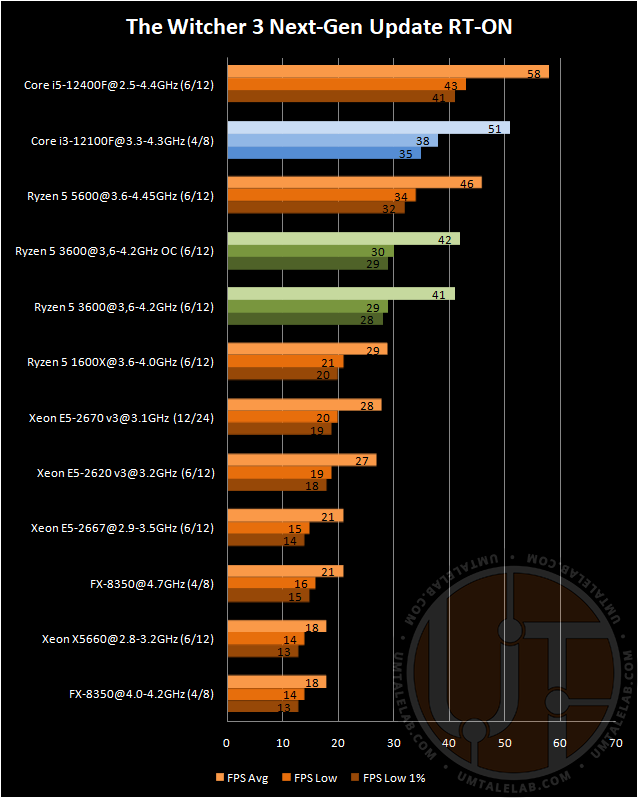
Ray Tracing – OFF

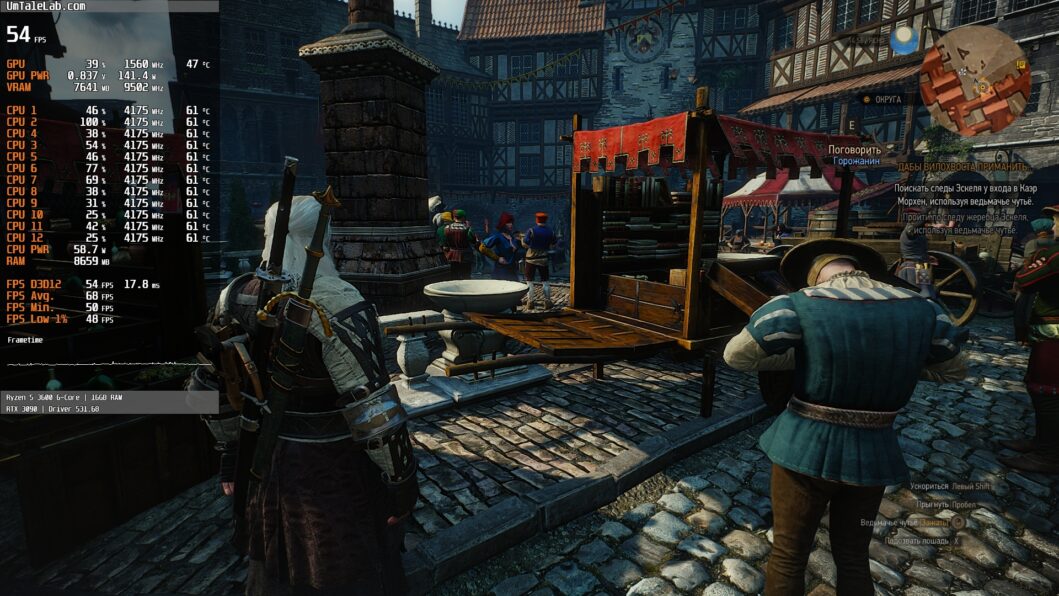
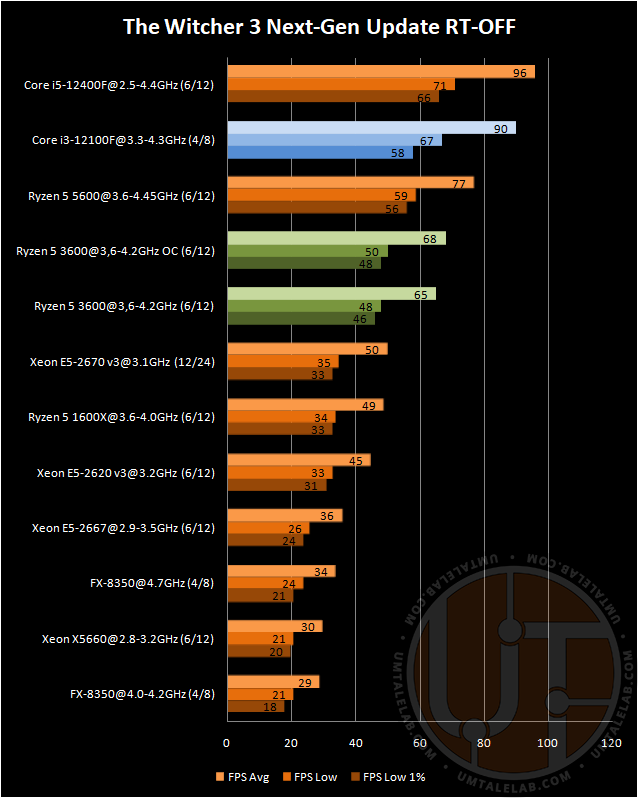
Watch Dogs Legion
Ray Tracing – ON
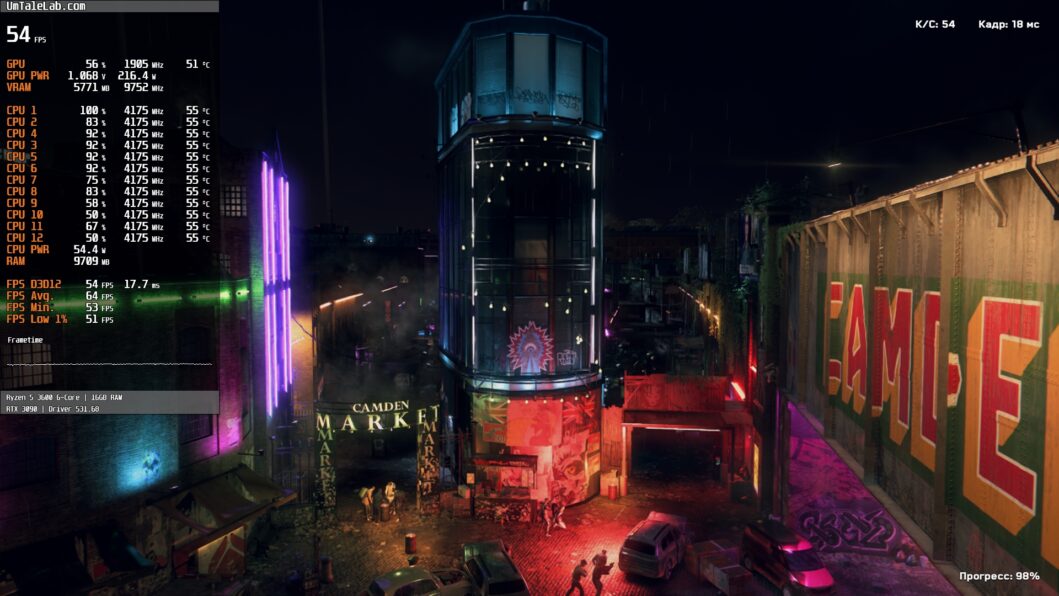
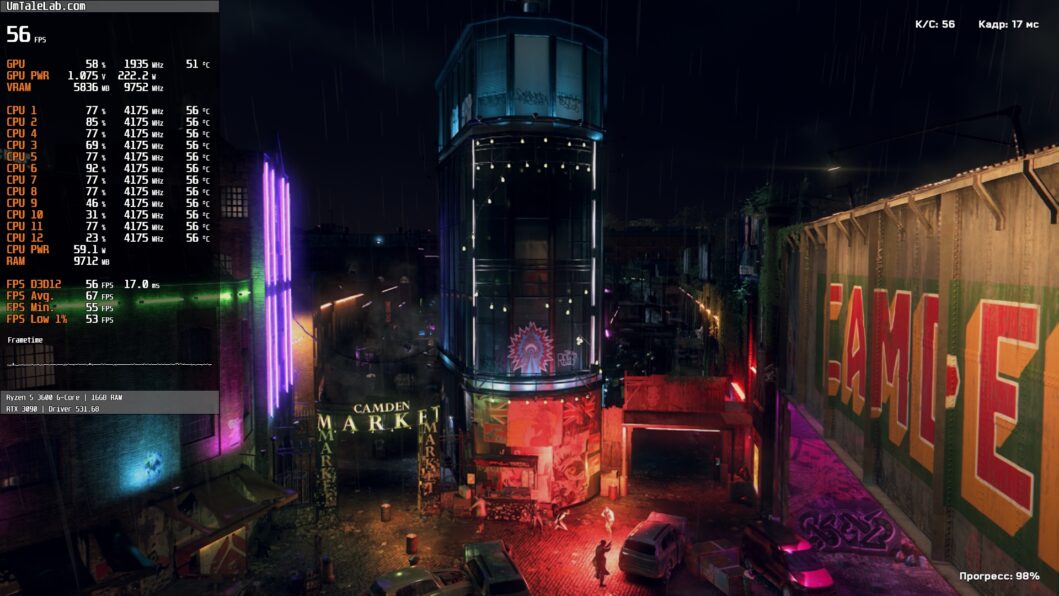
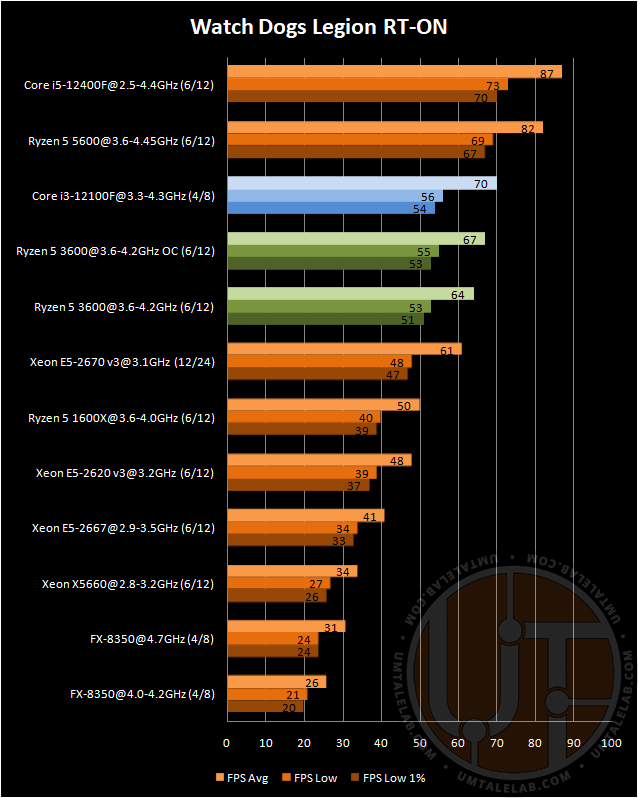
Ray Tracing – OFF
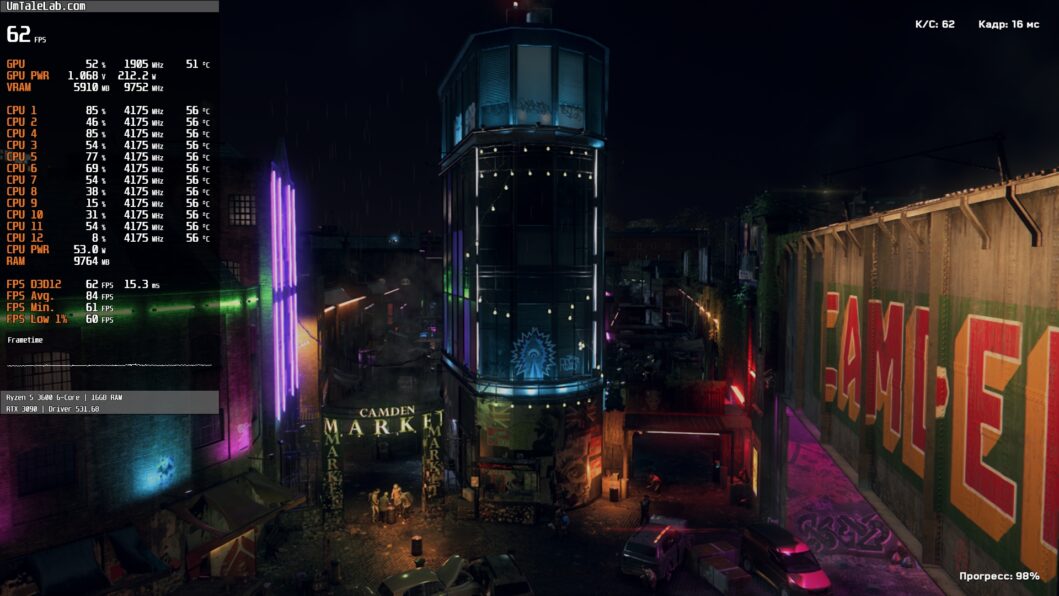
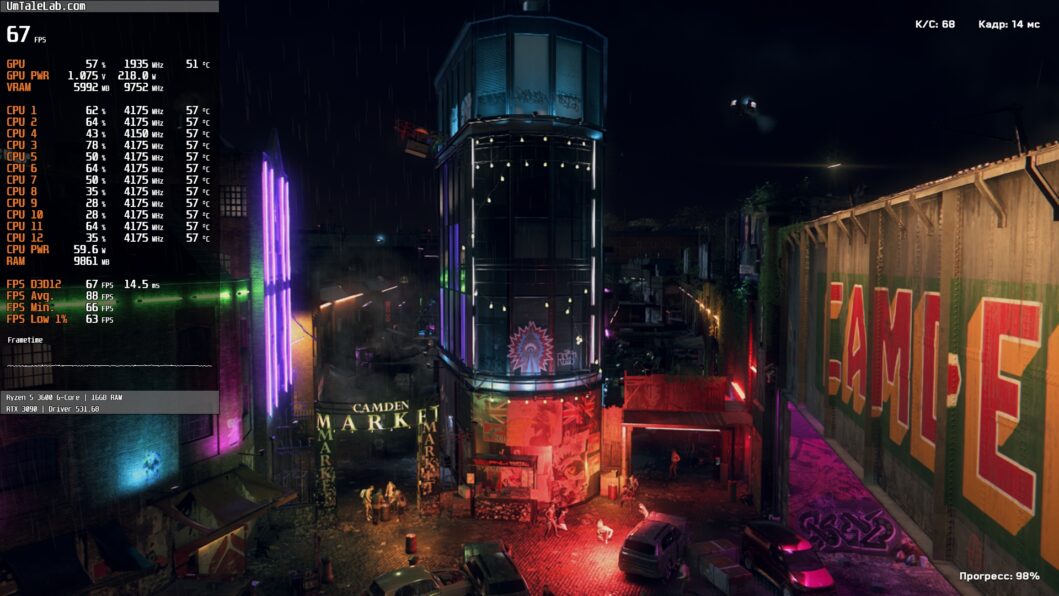
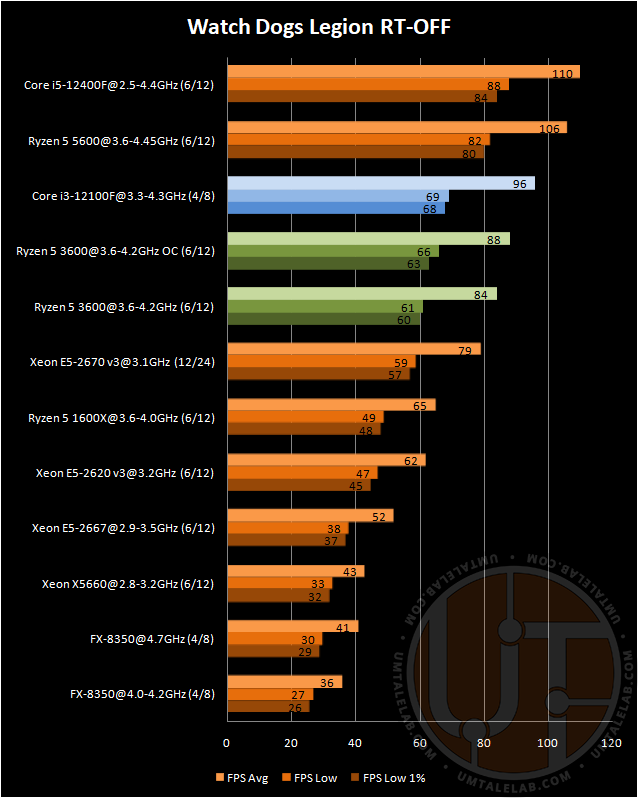
The difference between Ryzen 5 3600 and Core i3-12100F in 12 games
| Game | Ryzen 5 3600 | Core i3-12100F |
|---|---|---|
| Assassins Creed Valhalla | 16.28% | |
| Battlefield 2042 RT | 12.88% | |
| Battlefield 2042 | 16.98% | |
| Cyberpunk 2077 RT | 18.75% | |
| Cyberpunk 2077 | 18.69% | |
| Far Cry 6 RT | 29.33% | |
| Far Cry 6 | 32.56% | |
| Hogwarts Legacy RT | 40% | |
| Hogwarts Legacy | 34.43% | |
| Marvel’s Spider-Man RT | 16.9% | |
| Marvel’s Spider-Man | 24.74% | |
| RPCS3 – emulator | 20.83% | |
| Red Dead Redemption 2 | 14.91% | |
| The Riftbreaker | 45.98% | |
| The Witcher 3 Next-Gen RT | 24.39% | |
| The Witcher 3 Next-Gen | 38.46% | |
| Watch Dogs Legion RT | 9.38% | |
| Watch Dogs Legion | 14.29% |
In real gaming projects, the 6-core Zen 2 significantly falls behind the 4-core Alder Lake. Moreover, the Core i3-12100F advantage can reach an impressive 46%. Of course, in multi-threading-optimized projects like Watch Dogs Legion, Ryzen 5 3600 reduces its gap, but even so, in none of the tested games AMD’s six-core couldn’t overtake Intel’s quad-core.
We can’t overlook the top performance of the Intel Core i3-12100F, which is often on par with the 6-core Ryzen 5 5600.
Difference between Ryzen 5 3600 DDR4@3200MHz and DDR4@3600MHz
| Game | Ryzen 5 3600 DDR4@3200MHz | Ryzen 5 3600 DDR4@3600MHz |
|---|---|---|
| Assassins Creed Valhalla | 6.2% | |
| Battlefield 2042 RT | 6.06% | |
| Battlefield 2042 | 3.77% | |
| Cyberpunk 2077 RT | 3.75% | |
| Cyberpunk 2077 | 3.74% | |
| Far Cry 6 RT | 2.67% | |
| Far Cry 6 | 4.65% | |
| Hogwarts Legacy RT | 2.5% | |
| Hogwarts Legacy | 3.28% | |
| Marvel’s Spider-Man RT | 0% | |
| Marvel’s Spider-Man | 2.04% | |
| RPCS3 – emulator | 0% | |
| Red Dead Redemption 2 | 4.39% | |
| The Riftbreaker | 5.75% | |
| The Witcher 3 Next-Gen RT | 2.44% | |
| The Witcher 3 Next-Gen | 4.62% | |
| Watch Dogs Legion RT | 4.69% | |
| Watch Dogs Legion | 4.76% |
As for the performance boost from overclocking RAM from 3200 to 3600MHz, it ranges from 0% in RPCS3 emulator to 6% in Assassins Creed Valhalla, but on average it doesn’t exceed 5%.
Conclusion
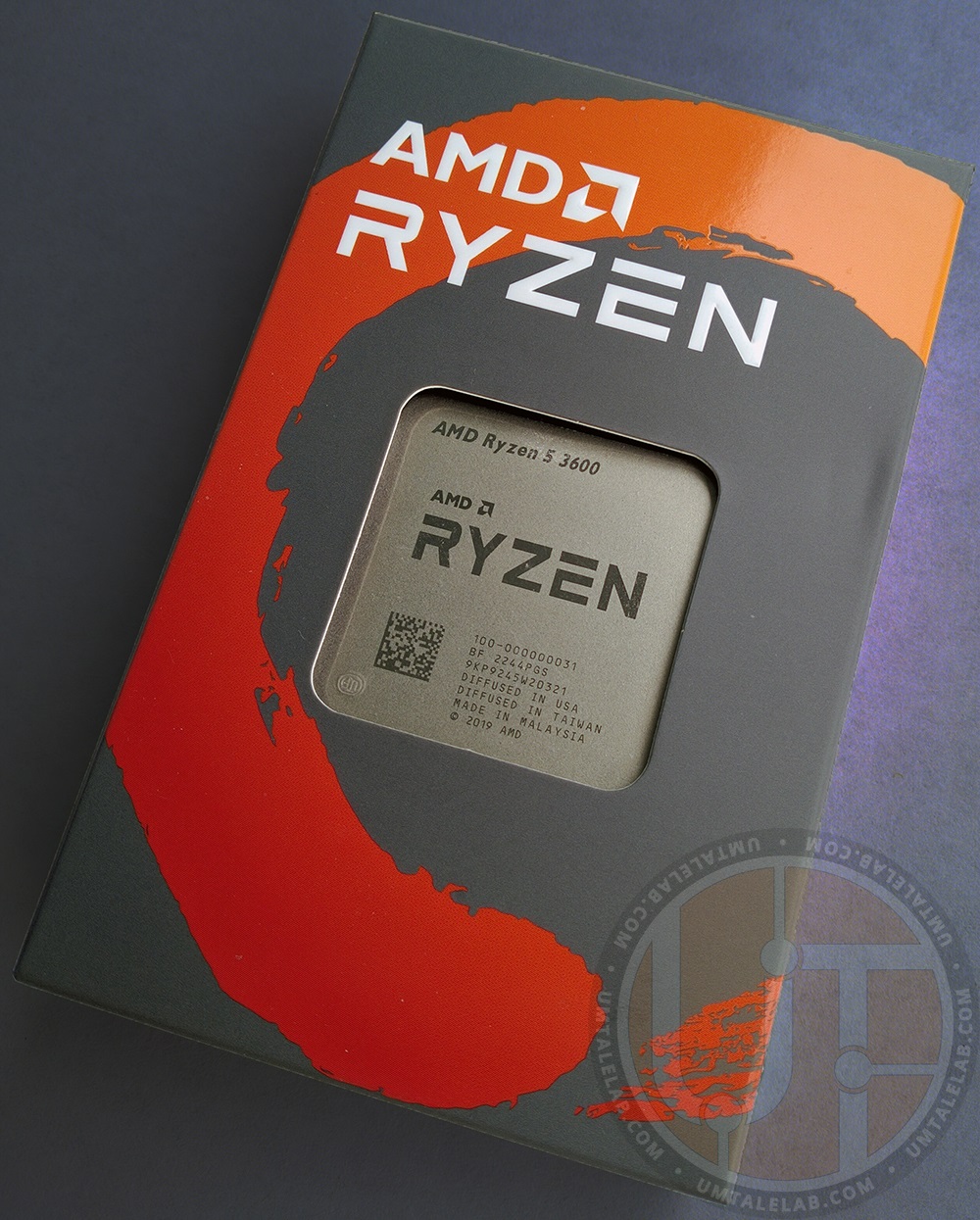
Ryzen 5 3600 turned out to be an extremely ambiguous CPU. Judge for yourself: the 6-core Zen 2 failed to shine in digital content creation due to the much cheaper and more productive Xeon E5-2670 v3, and the gap from Core i3-12100F cannot be called really tangible.
In gaming projects Ryzen 5 3600 performed faintly. It did not have a chance to give competition to Core i3-12100F in any of the titles, which generally puts this CPU in an extremely uncomfortable position.
Intel CPU has the same recommended price (both BOX and Tray versions), and the system based on it is estimated at about the same price and looks much more promising from the point of view of potential upgrade (either to the 12th generation processors or to the 13th generation at once).
Of course, the Intel chip has only four cores and does not have any overclocking potential, however, the i3-12100F is powered by an advanced architecture and high single-threaded performance. And this feature is still very valuable in many CPU applications, including gaming and web surfing.
But there is another very important point: if you already have a system based on the previous generation Ryzen 1000 or 2000, Ryzen 5 3600 will be a very good solution for a budget upgrade and a significant increase in performance for a relatively small amount of money.
However, these are just our conclusions. We have provided you with some food for thought, and as always, the choice is yours.
